




Lang Lang, piano
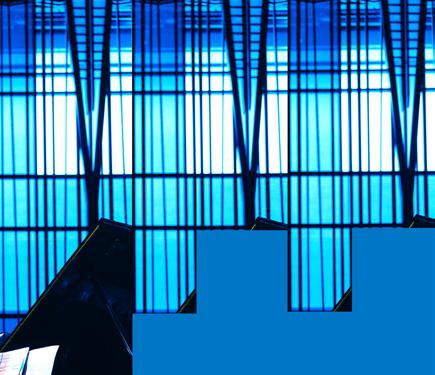

Angélique Kidjo, vocalist
SEPTEMBER
OPENING NIGHT
DANIIL TRIFONOV, piano
2 Performances
WEDNESDAY, SEPTEMBER 24, 2025 • 7:30 PM
THURSDAY, SEPTEMBER 25, 2025 • 7:30 PM Piano Series
ENDEA OWENS & THE COOKOUT*
SATURDAY, SEPTEMBER 27, 2025 • 5:30 PM & 8 PM
Concerts @ The JAI
OCT0BER
BILL CHARLAP TRIO*
SATURDAY, OCTOBER 11, 2025 • 5:30 PM & 8 PM
Concerts @ The JAI
CHRISTIAN McBRIDE & BRAD MEHLDAU
SATURDAY, OCTOBER 18, 2025 • 7:30 PM Jazz Series
DMITRY SHISHKIN*, piano
SUNDAY, OCTOBER 26, 2025 • 3 PM Discovery Series
NOVEMBER
MARIZA*
FRIDAY, NOVEMBER 7, 2025 • 7:30 PM
Global Roots Series · Balboa Theatre
BALLET PRELJOCAJ: GRAVITY
SUNDAY, NOVEMBER 9, 2025 • 7 PM Dance Series Civic Theatre
ANDREAS OTTENSAMER*, clarinet; KIAN SOLTANI, cello; ALESSIO BAX*, piano
THURSDAY, NOVEMBER 13, 2025 • 7:30 PM Revelle Chamber Music Series
DISNEY'S MOANA LIVE-TO-FILM CONCERT*
FRIDAY, NOVEMBER 14, 2025 • 6 PM
The ConRAD Kids Series Balboa Theatre
RAPHAËL FEUILLÂTRE*, guitar
SUNDAY, NOVEMBER 16, 2025 • 3 PM Discovery Series

YULIANNA AVDEEVA*, piano
THURSDAY, NOVEMBER 20, 2025 • 7:30 PM Piano Series
DECEMBER
MIREYA RAMOS
FRIDAY, DECEMBER 5, 2025 • 5:30 PM & 8 PM Concerts @ The JAI
MOMIX: ALICE
SATURDAY, DECEMBER 6, 2025 • 7:30 PM Dance Series • Civic Theatre
HOLIDAY OPEN HOUSE
THURSDAY, DECEMBER 11, 2025 • 4–7 PM
THE HOLIDAYS WITH CANADIAN BRASS
THURSDAY, DECEMBER 11, 2025 • 7:30 PM Special Event
PHILIPP SCHUPELIUS*, cello
JULIUS ASAL* , piano
SUNDAY, DECEMBER 14, 2025 • 3 PM Discovery Series
DOUG SMITH*:
WILD WOLVES OF YELLOWSTONE
THURSDAY, JANUARY 15, 2026 • 7:30 PM Speaker Series
COTTON*
Co-production with San Diego Opera
FRIDAY, JANUARY 16, 2026 • 7:30 PM Protostar Innovative Series
SUNNY JAIN’S WILD WILD EAST*
SUNDAY, JANUARY 18, 2026 · 5 PM & 7:30 PM Concerts @ The JAI
LUCAS & ARTHUR JUSSEN, pianos
THURSDAY, JANUARY 22, 2026 • 7:30 PM
Piano Series
COMPAGNIE HERVÉ KOUBI*: SOL INVICTUS
FRIDAY, JANUARY 30, 2026 • 7:30 PM
Dance Series • Balboa Theatre

FEBRUARY
ALFREDO RODRIGUEZ & PEDRITO MARTINEZ
SUNDAY, FEBRUARY 1, 2026 · 5 PM & 7:30 PM
Concerts @ The JAI
JOEL ROSS* GOOD VIBES
THURSDAY, FEBRUARY 5, 2026 · 5:30 PM & 8 PM
Concerts @ The JAI
JUAN DIEGO FLÓREZ*, tenor
THURSDAY, FEBRUARY 12, 2026 • 7:30 PM
Recital Series
AROD QUARTET
SATURDAY, FEBRUARY 14, 2026 • 7:30 PM
Revelle Chamber Music Series
KALANI PE‘A*
SUNDAY, FEBRUARY 15, 2026 • 3 PM
Global Roots Series
EPHRAT ASHERIE DANCE* WITH ARTURO O’FARRILL: SHADOW CITIES
2 Performances
SUNDAY, FEBRUARY 22, 2026 • 3 PM & 7 PM
Protostar Innovative Series
KEITH LADZINSKI*:FORCES OF NATURE
THURSDAY, FEBRUARY 26, 2026 • 7:30 PM
Speaker Series
MAO FUJITA, piano
FRIDAY, FEBRUARY 27, 2026 • 7:30 PM
Piano Series
CHUCHO VALDÉS & ARTURO SANDOVAL
LEGACY QUINTET
2 Performances
WEDNESDAY, MARCH 4, 2026 • 7:30 PM
THURSDAY, MARCH 5, 2026 • 7:30 PM
Jazz Series
THE BAD PLUS* WITH CHRIS POTTER AND CRAIG TABORN
THURSDAY, MARCH 12, 2026 • 5:30 PM & 8 PM
Concerts @ The JAI
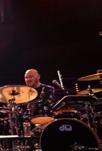
LE CONSORT: A TRIO SONATA SOIRÉE*
FRIDAY, MARCH 20, 2026 • 7:30 PM Revelle Chamber Music Series
AUGUSTIN HADELICH, violin
FRANCESCO PIEMONTESI*, piano
SATURDAY, MARCH 21, 2026 • 8 PM
Recital Series
Doodle POP*


SUNDAY, MARCH 22, 2026 • 3 PM
The ConRAD Kids Series
LANG LANG, piano
THURSDAY, MARCH 26, 2026 • 7:30 PM
Special Event · Jacobs Music Center
RAVI SHANKAR ENSEMBLE*
SUNDAY, MARCH 29, 2026 • 7 PM
Global Roots Series
APRIL
EMMET COHEN PRESENTS:
MILES AND COLTRANE AT 100
4 Performances
MONDAY, APRIL 6, 2026 • 5:30 PM & 8 PM
TUESDAY, APRIL 7, 2026 • 5:30 PM & 8 PM
Concerts @ The JAI: Jazz Mini-Festival
TERENCE BLANCHARD & RAVI COLTRANE*
MILES DAVIS & JOHN COLTRANE AT 100
THURSDAY, APRIL 9, 2026 • 7:30 PM
Jazz Series: Jazz Mini-Festival Balboa Theatre
COLTRANE 100:
BOTH DIRECTIONS AT ONCE
SATURDAY, APRIL 11, 2026 • 7:30 PM
Jazz Series: Jazz Mini-Festival
DANISH STRING QUARTET
DANISH NATIONAL GIRLS’ CHOIR*
SUNDAY, APRIL 12, 2026 • 3 PM
Revelle Chamber Music Series
GAUTIER CAPUÇON, cello
JEAN-YVES THIBAUDET, piano
WEDNESDAY, APRIL 15, 2026 • 7:30 PM
Recital Series
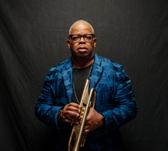

BENNY BENACK III*: THE MAGIC OF MANHATTAN
SATURDAY, APRIL 18, 2026 • 5:30 PM & 8 PM Concerts @ The JAI
ARISTO SHAM*, piano VAN CLIBURN GOLD MEDAL WINNER
SUNDAY, APRIL 19, 2026 • 3 PM Discovery Series
AARON DIEHL TRIO
FRIDAY, APRIL 24, 2026 • 5:30 PM & 8 PM Concerts @ The JAI
ART OF ELAN: DANCING ON TIPTOES
SATURDAY, APRIL 25, 2026 • 10 AM & 11:30 AM The ConRAD Kids Series • The JAI
ALEXANDRE KANTOROW*, piano
SATURDAY, APRIL 25, 2026 • 7:30 PM Piano Series
DAVID McLAIN*: BLUE ZONES
THURSDAY, APRIL 30, 2026 • 7:30 PM Speaker Series
ANGÉLIQUE KIDJO*
SUNDAY, MAY 3, 2026 • 7 PM Global Roots Series
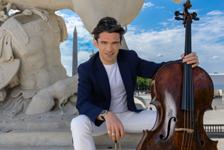
UNLOCKING THE SECRETS OF LONGEVITY

HAYATO SUMINO*, piano
SATURDAY, MAY 9, 2026 • 7:30 PM
Protostar Innovative Series
TRACY DRAIN*: COSMIC ADVENTURES
THURSDAY, MAY 14, 2026 • 7:30 PM Speaker Series
SHENEL JOHNS*
SATURDAY, MAY 16, 2026 · 5:30 PM & 8 PM
Concerts @ The JAI
STELLA CHEN*, violin
GILLES VONSATTEL, piano
SUNDAY, MAY 31, 2026 • 3 PM
Discovery Series
JUNE
JIHYE LEE ORCHESTRA*
SATURDAY, JUNE 6, 2026 • 5:30 PM & 8 PM
Concerts @ The JAI
*LJMS debut


DOUG SMITH: WILD WOLVES OF YELLOWSTONE
THURSDAY, JANUARY 15 · 7:30 PM
The Baker-Baum Concert Hall
Speaker Series
Co-production with FRIDAY, JANUARY
The Baker-Baum C Protostar Innova
San Diego Opera 16 · 7:30 PM
Concert Hall
Innovative Series



SUNNY JAIN’S WILD WILD EAST
SUNDAY, JANUARY 18
5 PM & 7:30 PM
The JAI
Concerts @ The JAI





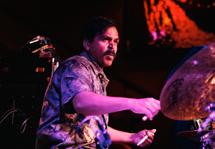
COMPAGNIE HERVÉ KOUBI: SOL INVICTUS
FRIDAY, JANUARY 30 · 7:30 PM
Balboa Theatre Dance Series
LUCAS & ARTHUR JUSSEN, pianos
THURSDAY, JANUARY 22 · 7:30 PM
The Baker-Baum Concert Hall Piano Series
FEBRUARY
ALFREDO RODRIGUEZ & PEDRITO MARTINEZ
SUNDAY, FEBRUARY 1
5 PM & 7:30 PM
The JAI
Concerts @ The JAI

“ The dancers of Compagnie Hervé Koubi could be mistaken for gods.”
—The New Yorker

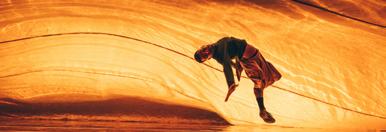


THURSDAY, FEBRUARY 5
5:30 PM & 8 PM
The JAI Concerts @ The JAI


JUAN DIEGO FLÓREZ, tenor
THURSDAY, FEBRUARY 12 · 7:30 PM
The Baker-Baum Concert Hall Recital Series
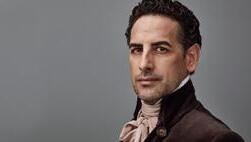
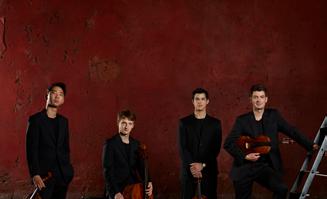
AROD QUARTET
SATURDAY, FEBRUARY 14 • 7:30 PM
The Baker-Baum Concert Hall Revelle Chamber Music Series
EPHRAT ASHERIE DANCE WITH ARTURO O’FARRILL SHADOW CITIES
SUNDAY, FEBRUARY 22 · 3 PM & 7 PM
The Baker-Baum Concert Hall Protostar Innovative Series

KEITH LADZINSKI: FORCES OF NATURE
“
Juan Diego Flórez is one of the greatest tenors in the world. Of that there can be no doubt.”
— OperaWire
KALANI PE‘A
SUNDAY, FEBRUARY 15 · 3 PM
The Baker-Baum Concert Hall Global Roots Series
A major, innovative figure in contemporary Hawaiian music” — Maui News

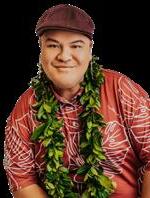

THURSDAY, FEBRUARY 26 · 7:30 PM
The Baker-Baum Concert Hall Speaker Series


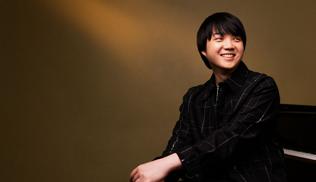
piano
FRIDAY, FEBRUARY 27 · 7:30 PM
The Baker-Baum Concert Hall Piano Series
“ Brilliant...one to watch” — The Times







The moment has arrived... Join us for our grand reopening.
Acclaimed Executive Chef Kelli Crosson presents locally sourced, regional cuisine with breathtaking views of the Torrey Pines Golf Course and stunning sunsets over the Pacific Ocean.








Our gratitude to these Medallion Society Pillars founding members who have made significant four-year commitments that will help us better serve all of the San Diego region. The Conrad can be a catalyst to bring thousands of adults and children together through a common appreciation of the performing arts, which enhance the artistic fabric of our community.

$1 MILLION and above
Brenda Baker and Steve Baum
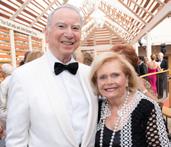
$1 MILLION and above
Irwin and Joan* Jacobs

$1 MILLION and above
Dorothea Laub
$500,000 and above
Karen and Kit Sickels

$400,000 and above
Mary Ellen Clark

$400,000 and above
Raffaella and John* Belanich

$400,000 and above
Eleanor and Ric Charlton
$400,000 and above
Jacqueline and Jean-Luc Robert

$400,000 and above
Debbie Turner
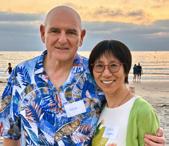
$400,000 and above
Marco Londei and Liqun Wang

$200,000 and above
Keith and Helen Kim

$200,000 and above
Julie and Bert Cornelison

$200,000 and above
Angel and Fred Kleinbub
$200,000 and above
Haeyoung Kong Tang


Thank you to these Pillars in the community.
$200,000 and above
Sue and Peter Wagener
$200,000 and above
Herbert Solomon and Elaine Galinson
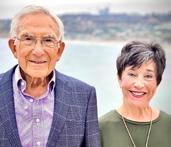

$200,000 and above
Vivian Lim and Joseph Wong
For information about supporting La Jolla Music Society through membership in the Pillars program, please contact Ferdinand Gasang at 858.526.3426 or FGasang@TheConrad.org.



Vision Statement
To transform lives through the performing arts, serving as a beacon of world-class artistic excellence, innovation, and inclusivity.
Mission Statement
To enrich the evolving cultural landscape of San Diego by curating a dynamic array of world-class performing arts programming, create meaningful learning opportunities, and build connections between artists and audiences.

From classical, jazz, and dance to global music, exciting speakers, and family concerts, each season
Artistic Director Leah Rosenthal brings the best artists in the world to the San Diego community. This season will feature more than 70 artists, including superstars like Lang Lang, Angélique Kidjo, MOMIX, Daniil Trifonov, Juan Diego Flórez, and many more. Join us at The Conrad as well as the Civic Theatre, Balboa Theatre, and Jacobs Music Center to see the best the world has to offer.



La Jolla Music Society’s acclaimed chamber music festival, SummerFest, curated by award-winning pianist and festival Music Director Inon Barnatan, celebrates its 40th anniversary in 2026. SummerFest engages more than 80 of the world’s finest musicians to perform at The Conrad throughout the month of August. In addition to remarkable mainstage performances, SummerFest offers over 50 free and open-to-the-public educational activities. To learn more, visit TheConrad.org/SummerFest.



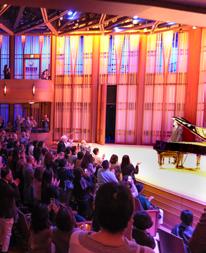
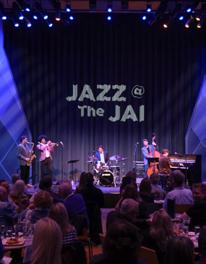
The Conrad opened in 2019 and serves as a gathering place for cultural, arts education, and community activity. As the permanent home of La Jolla Music Society, The Conrad hosts world-class performances presented by La Jolla Music Society and other local arts organizations in its four outstanding performance and activity spaces, The Baker-Baum Concert Hall, The JAI, The Atkinson Room, and the picturesque Wu Tsai QRT.yrd.

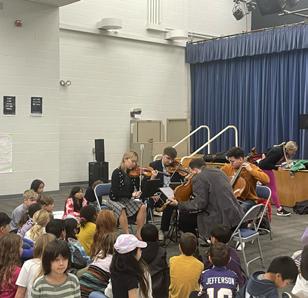
La Jolla Music Society’s award-winning Learning & Engagement Programming provides unmatched access and learning opportunities to more than 15,000 students and community members throughout San Diego County annually. With learning and engagement at the heart of our mission, we work closely with each visiting artist and ensemble to create outreach activities that highlight their unique talents and expertise at both The Conrad and in the community. With our state-of the-art video and streaming capabilities at The Conrad, we are able to provide live streaming for events such as our annual SummerFest and education events for free in our Digital Concert Hall.
The Conrad Prebys Performing Arts Center acknowledges the ancestral, unceded territory of the Kumeyaay people, on which The Conrad was built. We hold great respect for the land and the original people of the area where our performing arts center is located. The Kumeyaay continue to maintain their political sovereignty and cultural traditions as vital members of the San Diego community.

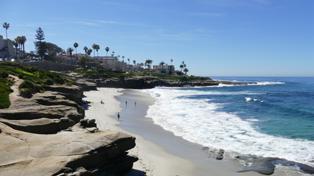
Vivian Lim – Chair
Bert Cornelison – Vice Chair
Mary Ellen Clark - Treasurer
Stacy Kellner Rosenberg - Secretary
Stephen L. Baum
David Belanich
Marla Bingham
Eleanor Charlton
Sharon Cohen
Ellise Coit
Peter Cooper
Ann Parode Dynes
Jennifer Eve
Debby Fishburn
Stephen Gamp
Lehn Goetz
John Hesselink
Teresa Hixson
David Kabakoff
Nancy Linke Patton
Diana Lombrozo
Sue Major
Richard A. Norling
Kazeem Omidiji
Arman Oruc
Tom Rasmussen
Sylvia Ré
Sheryl Scarano
Neal Schmale
Jeanette Stevens
Stephanie Stone
Peter Wagener
Liqun Wang
Lise Wilson
Bebe L. Zigman
HONORARY DIRECTORS
Brenda Baker
Stephen L. Baum
Raffaella Belanich
Joy Frieman, Ph.D.
Irwin M. Jacobs
Joan Jacobs (1933—2024)
Lois Kohn (1924—2010)
Helene K. Kruger (1916—2019)
Conrad Prebys (1933—2016)
Peggy Preuss
Ellen Revelle (1910—2009)
Leigh P. Ryan, Esq.
Dolly Woo
Todd R. Schultz
President & CEO
Leah Rosenthal
Artistic Director
Inon Barnatan
SummerFest Music Director
ADMINISTRATION
Casey McEnelly
Director of Finance
Brady Stender
Controller
Breanne Self
Human Resources & Finance Manager
Grace Smith
Artistic Planning & Operations Director
Anne-Marie Dicce
Artistic Planning Manager
George Pritzker
Artistic Operations Coordinator
Juliet Zimmer
Artistic Rentals & Partnerships Director
Braulio Fernandez-Flores
Artistic Rentals Coordinator/
Assistant Front of House Manager
John Tessmer
Lead Artist Liaison
Maggie de Lorimier
Artist Liason
Eric Bromberger
Program Annotator
PRODUCTION & OPERATIONS
Jamie Coyne
Director of Production & Operations
Adam Wiebe
Technical Director
Tyler Merrihew
Assistant Technical Director
Caren Heintzelman
Assistant Production Manager
Lauren Cernik-Price
Production Coordinator & Stage Manager
Sam Bedford
Stage Manager
Abby Viton
Stage Manager
Jonnel Domilos
Piano Technician
Colin Dickson
Facilities Manager
Evan Calderon
Facilities Coordinator
Kim Chevallier
Security Guard
Allison Boles
Director of Learning & Engagement
Jade Lewenhaupt
Learning & Engagement Coordinator
Serafin Paredes
Community Music Center Director
Aimee Alvarado
Community Music Center Administrative Assistant
Community Music Center Instructors:
Mariana Flores Bucio, Marcus Cortez, David Garcia, Ian Lawrence, Sofia Magallenes, Marko Paul, Eduardo Ruiz, Juan Sanchez, Miguel Zazueta
Ferdinand Gasang
Director of Development
Anne Delleman
Development Manager
Wadeaa Jubran
Development Coordinator
Nicole Slavik
Special Events & Catering Director
Vivian Vu
Special Events Coordinator
Sarah Wood Torrey
Institutional Giving Consultant
Mary Cook
Director of Communications, Marketing & Guest Services
Stephanie Saad
Communications & Public Relations Director
David Silva
Marketing Manager & Sales Director
Cristal Salow
Database & Analytics Manager
Mariel Pillado
Graphic Designer
Marsi Bennion
Box Office & Guest Services Director
Patrick Mayuyu
Box Office & Guest Services Manager
Sam Crowley
Box Office & Guest Services Lead
Mitch Maker
Box Office & Guest Services Associate
Veronica Eddings
Box Office & Guest Services Associate
Shaun Davis
House Manager

Welcome to La Jolla Music Society’s 57th Season!
So many of us are still glowing from the success of SummerFest 2025—four weeks of extraordinary concerts curated by Music Director Inon Barnatan, which drew record attendance and featured performances of the highest international caliber. And it wasn’t just us who felt the magic—critics agreed. Paul Bodine of Times of San Diego wrote, “One of the glories of La Jolla Music Society’s annual SummerFest is its perennial embrace of neglected music,” while Eileen Wingard of San Diego Jewish World praised the festival as “another illustration of Barnatan’s ability to draw the highest level of talent from all corners of the globe to create in SummerFest a festival of the highest order.”
Since the opening of The Conrad in 2019, our Season programming has grown phenomenally—thanks to you, our patrons and generous donors. Under the leadership of Artistic Director Leah Rosenthal, we’ve doubled the number of annual performances and introduced several new series, all met with enthusiastic audiences. This season, Leah has once again worked her magic to bring us a vibrant and eclectic mix of superstars, cuttingedge innovators, and emerging talents—something for every musical taste.
Looking ahead, we’re focused on long-range planning to ensure La Jolla Music Society’s continued vitality and impact. I’m proud to announce our “60 x 60 Endowment Campaign,” an ambitious effort to raise $60 million by our 60th Anniversary Season in 2029. This campaign will help secure artistic excellence, educational outreach, and cultural vibrancy at The Conrad and throughout San Diego for generations to come, and we invite anyone considering a donation or inclusion of La Jolla Music Society in their estate plans to contact Director of Development Ferdie Gasang.
Thank you for being part of the La Jolla Music Society family. I look forward to seeing you at The Conrad this season.
Todd R. Schultz President & CEO
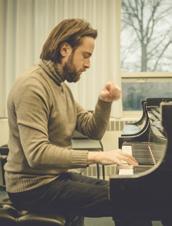
PRELUDE 6:30 PM
Lecture by Kristi Brown-Montesano
WEDNESDAY, SEPTEMBER 24, 2025 · 7:30 PM
THE BAKER-BAUM CONCERT HALL
TANEYEV
Prelude and Fugue in G-sharp Minor, Opus 29 (1856–1915)
Prelude, Andande
Fugue, Allegro vivace e con fuoco
PROKOFIEV
Visions Fugitives, Opus 22 (1891–1953) Lentamente
Andate
Allegretto
Animato
Molto giocoso
Con eleganza
Pittoresco (Arpa)
Comodo
Allegro tranquillo
Ridicolosamente
Con vivacita
Assai moderato
Allegretto
Feroce
Inquieto
Dolente
Poetico
Con una dolce lentezza
Tonight’s performance is dedicated in loving memory of Joseph Taft.
La Jolla Music Society’s 2025–26 Season is supported by The City of San Diego Cultural Affairs, California Arts Council, County of San Diego, Prebys Foundation, Farfy Foundation, The Lodge at Torrey Pines, ProtoStar Foundation, Vail Memorial Fund, Rancho La Puerta, Banc of California, ResMed Foundation, San Diego Theatres Foundation, Bright Events Rentals, Cafe Coyote, Rancho Coyote, GRNFC Hospitality Group, Ace Parking, Brenda Baker and Steve Baum, Raffaella Belanich, Gordon Brodfuehrer, Eleanor and Ric Charlton, Mary Ellen Clark, Bert and Julie Cornelison, Elaine Galinson and Herbert Solomon, Irwin Jacobs, Helen and Keith Kim, Angelina and Fred Kleinbub, Dorothea Laub, Vivian Lim and Joseph Wong, Jaqueline and Jean-Luc Robert, Marge and Neal Schmale, Karen and Kit Sickels, Jeanette Stevens, Haeyoung Kong Tang, Debra Turner, Sue and Peter Wagener, Liqun Wang and Marco Londei, Anna and Edward Yeung, Bebe and Marvin Zigman.
Opus 3 Artists
MYASKOVSKY
Presto agitatissimo e molto accentuato
Lento irrealmente
Piano Sonata No. 2 in F-sharp Minor, Opus 13 (1881–1950)
INTERMISSION
SCHUMANN
Piano Sonata No. 1 in F-sharp Minor, Opus 11 (1810–1856) Introduzione: Un poco adagio – Allegro vivace
Aria
Scherzo: Allegrissimo – intermezzo: Lento
Finale: Allegro, un poco maestoso
Daniil Trifonov, piano
Daniil Trifonov last performed for La Jolla Music Society in the Piano Series on November 10, 2022.
Program notes by Eric Bromberger
Born November 25, 1856, Vladimir, Russia
Died June 19, 1915, Dyudkovo, Russia
Composed: 1910
Approximate Duration: 8 minutes
Sergei Taneyev began studying composition with Tchaikovsky when he was a teenager, and he went on to become Tchaikovsky’s most successful student and a close friend. Taneyev gave the Moscow premiere of Tchaikovsky’s First Piano Concerto in December 1875 when he was only 19 and succeeded Tchaikovsky as professor of composition at the Moscow Conservatory. As a teacher at the Conservatory, Taneyev had a number of distinguished students, but—alarmed by the Conservatory’s elitist standards and moved by the revolutionary sentiments in the air—Taneyev resigned from the faculty in 1905 and formed his own “People’s Conservatory” in Moscow that would offer instruction even to those unable to pay. He died from the pneumonia he contracted at the funeral of one of his best students, Alexander Scriabin.
Taneyev occupies a unique position among turn-of-thecentury Russian composers in that he rejected all forms of nationalistic music, whether folktunes or dance rhythms, in favor of the classical forms of Western music. Taneyev was particularly interested in polyphony, and he made an intense study of the music of not just Bach, but of earlier masters like Palestrina, Lassus, and des Pres. The best example of this passion in Taneyev’s own music is his Prelude and Fugue in G-sharp Minor, Opus 29, composed in 1910, only five years before his death. This is not part of a set of preludes and fugues in all the keys in the manner of Bach’s Well-Tempered Clavier, but a stand-alone composition, and it appears to have been important to its creator—it is the only one of his works for solo piano that he assigned an opus number.
This is an extraordinarily difficult piece for the pianist, who must master its supple rhythms, powerful chordal writing, and chromatic harmonies—the piece may be in G-sharp minor, but the notion of a clear home key is often lost in this wide-ranging music. The Prelude gets off to a gentle start, and some sense of this music can be felt in Taneyev’s instructions to the pianist: cantabile, espressivo, dolce. Still, it drives to a massive climax marked Maestoso (“majestic”) and con forza before falling away to a most subdued conclusion. Out of that silence, the fugue explodes to life. Taneyev’s marking is Allegro vivace e con fuoco, and he does indeed want the fugue played “with fire.” It is in the unusual metric marking 2/4 (12/16), and the pianist must keep the complex contrapuntal strands clear at a very rapid tempo. Again, Taneyev’s markings tell the tale: he wants this music played agitato, impetuoso, and marcatissimo. The music drives to another Maestoso climax, then rushes to a sudden, surprising conclusion.
Aware of this music’s difficulty, Taneyev arranged it for two pianos in 1914, but it remains difficult even for two performers. Mr. Trifonov opens this recital with the original version for just one pianist.
Born April 23, 1891, Sontsovka, Russia
Died March 5, 1953, Moscow
Composed: 1917
Approximate Duration: 24 minutes
Prokofiev composed this collection of twenty brief pieces for piano during the years 1915–17, just as the Russian Revolution exploded around him. These pieces were not composed in the sequence in which they were published, and listeners should not search for a progression or for any unifying element. Prokofiev’s title is the key to understanding this music, for these pieces truly are fleeting—or fugitive—visions: each of them is a tiny toneimpression, some lasting only a matter of seconds.
Prokofiev took his title from a poem by the Russian Constantin Balmont:
In every fugitive vision I see worlds,
Full of the changing play of rainbow hues. The full quotation is important, for this music does change by the instant, very much like the shifting tints of a rainbow. Prokofiev varies the pieces—and the moods—sharply. The lyric gives way to the fierce, which gives way to the sardonic, and so on. Particularly striking are the quiet pieces—this music came from a period in Prokofiev’s career when he delighted in outraging audiences, and the gentleness of the Visions Fugitives caught early audiences by surprise. An exception to this is the next-to-last piece, marked Presto agitatissimo e molto accentuato. Written during the revolutionary struggles early in 1917, it was meant to depict—in just a few moments of violent sound—the fighting Prokofiev saw around him.
Born April 20, 1881, Novogeorgiyevsk, Poland
Died August 8, 1950, Moscow
Composed: 1912
Approximate Duration: 20 minutes
Born into a military family, Nikolai Miaskovsky was expected to go into the army, and he did. But music was his true calling, and he recognized that early: while he was stationed in Moscow, the young officer found time to study harmony with Glière, and he left the army as soon as he could. Miaskovsky entered the St. Petersburg Conservatory in 1906, at the advanced age of 25, and there he studied with Liadov and RimskyKorsakov and became a lifelong friend of Prokofiev (he would later become a good friend of Shostakovich).
Miaskovsky was much respected as a teacher, and among his students were such composers as Khachaturian, Kabalevsky, and Shebalin. Though Miaskovsky appears to have been sincere in
his support for the ideals of the revolution, life for a Soviet artist was never easy: Miaskovsky was one of those singled out for censure at the infamous Congress of Soviet Composers in 1948. At that time he was already suffering from the cancer that would kill him, and he did not respond to the government’s criticism.
There was a time when Miaskovsky was regarded, along with Prokofiev and Shostakovich, as one of the three greatest Soviet symphonists, but over the last half-century his music has almost disappeared from Western concert halls. The sheer quantity of Miaskovsky’s music can be intimidating: he composed 27 symphonies, 13 string quartets, nine piano sonatas, and a number of orchestral and chamber scores. That music has certainly had its advocates: Mstislav Rostropovich championed Miaskovsky’s Cello Concerto, Glenn Gould admired his piano music, and both the Philadelphia Orchestra and Chicago Symphony recorded Miaskovsky’s excellent one-movement Symphony No. 21, composed in 1940. But today, seventy-five years after his death, Miaskovsky’s music is seldom heard in this country, and that makes a performance of the Piano Sonata No. 2 all the more welcome.
Miaskovsky wrote this sonata in 1912, the year after he graduated from the St. Petersburg Conservatory, and revised it in 1948, two years before his death. Like many of his works, the sonata—which spans about twenty minutes—is in one continuous movement, though that structure can divide into sections at different tempos. This is big-boned music, bold in attack and sonority: when Miaskovsky marks the slow introduction deciso (“decisive”), he means it. This music’s unstable harmonic language often suggests the music of Scriabin, who was at this time composing his own cycle of piano sonatas.
The Lento introduction gives way to the main body of the sonata, which has the tempo marking Allegro affanato (“anxious, unsettled”). This Allegro is in a generalized sonata-form structure, but this is shaped with much imagination. The opening subject is indeed unsettled, and its sonority can be powerful and heavy. A measure of relief arrives with the second subject, but then comes a surprise: Miaskovsky introduces a third theme, and it is the Dies Irae, the ancient plainchant melody that so haunted Rachmaninoff. Miaskovsky treats all these ideas in the extended development, but rather than concluding with the expected recapitulation, he builds a fugue on a variant of the Dies Irae theme, and this drives the sonata to its powerful conclusion.
Born June 8, 1810, Zwickau, Germany
Died July 29, 1856, Endenich, Germany
Composed: 1832-1835
Approximate Duration: 30 minutes
Schumann’s First Piano Sonata took shape slowly during the period 1832–5, when the composer was in his early twenties and deeply in love with Clara Wieck, then in her mid-teens. Her father was so violently opposed to the match that he forbade
Clara to see the young composer, and when Schumann published the sonata in 1836 he did so anonymously, inscribing it only “Dedicated to Clara from Florestan and Eusebius.” These were the two faces Schumann recognized in his own personality: Florestan was the impulsive, impetuous side; Eusebius the calm, reflective one. Clara of course knew who had written the sonata and performed it in public to defy her father.
Perhaps because the Piano Sonata No. 1 took shape over a period of years, Schumann borrowed from several early works for his thematic material, but he combines this material skillfully. In fact, one of the most remarkable things about this sonata is its thematic unity. The first movement opens with a long introduction, and the Allegro vivace then begins with a quiet eight-note figure in the left hand. The composer of this figure, however, was not Schumann but the young Clara—it comes from her Characteristic Pieces, Opus 5—and Schumann uses it here as the accompaniment to his own main theme, heard immediately in the right hand. The ingenious combination of his own music with Clara’s was a clear message of love. The right-hand theme had been composed several years earlier by Schumann as his Fandango: fantaisie rhapsodique pour le pianoforte. A tender second subject leads to a long development, and the movement ends with a quiet restatement of Clara’s eightnote figure.
Schumann called the second movement Aria and based it on his song To Anna, written in 1828. If the theme sounds familiar, it should: in one of the sonata’s most striking touches, Schumann had foreshadowed this melody by using it in the introduction to the first movement. The third—a Scherzo e Intermezzo marked Allegrissimo—is mercurial, racing brilliantly through the range of the keyboard. One expects the Intermezzo to be a quiet contrast, but again Schumann springs a surprise, for this section is even more vigorous than the scherzo. He marks it alla burla, ma pomposo: “jestingly, but pompous.” Before the return of the scherzo section, Schumann brings the Intermezzo to an inflated close, instructing the pianist to sound “quasi Oboe.” The Finale, marked Allegro un poco maestoso, contains some of the sonata’s most brilliant music. The main theme, of steady rhythmic pulse, is heard immediately and—despite some quiet interludes— dominates the long final movement.

PRELUDE 6:30 PM
Lecture by Tiffany Kuo
THURSDAY, SEPTEMBER 25, 2025 · 7:30 PM
THE BAKER-BAUM CONCERT HALL
TCHAIKOVSKY
Piano Sonata in C-sharp Minor, Opus Posth. 80 (1840–1893)
Allegro con fuoco
Andante
Allegro vivo
Allegro vivo
Children’s Album, Opus 39
Morning Prayer: Andante
Winter Morning: Allegro
Playing Hobby-Horses: Presto
Mama: Moderato
March of the Wooden Soldiers: Moderato
The Sick Doll: Moderato
The Doll’s Funeral: Adagio
Waltz: Allegro assai
The New Doll: Allegro
Mazurka: Allegro non troppo, Tempo di mazurka
Russian Song: Allegro
The Accordion Player: Adagio
Kamarinskaya: Vivace
Polka: Moderato. Tempo di Polka
Italian Song: Moderato assai
Old French Song: Molto moderato
Tonight’s performance is sponsored by Doctor Bob and Mao Shillman, in recognition of Ferdie Gasang.
La Jolla Music Society’s 2025–26 Season is supported by The City of San Diego Cultural Affairs, California Arts Council, County of San Diego, Prebys Foundation, Farfy Foundation, The Lodge at Torrey Pines, ProtoStar Foundation, Vail Memorial Fund, Rancho La Puerta, Banc of California, ResMed Foundation, San Diego Theatres Foundation, Bright Events Rentals, Cafe Coyote, Rancho Coyote, GRNFC Hospitality Group, Ace Parking, Brenda Baker and Steve Baum, Raffaella Belanich, Gordon Brodfuehrer, Eleanor and Ric Charlton, Mary Ellen Clark, Bert and Julie Cornelison, Elaine Galinson and Herbert Solomon, Irwin Jacobs, Helen and Keith Kim, Angelina and Fred Kleinbub, Dorothea Laub, Vivian Lim and Joseph Wong, Jaqueline and Jean-Luc Robert, Marge and Neal Schmale, Karen and Kit Sickels, Jeanette Stevens, Haeyoung Kong Tang, Debra Turner, Sue and Peter Wagener, Liqun Wang and Marco Londei, Anna and Edward Yeung, Bebe and Marvin Zigman.
Opus 3 Artists
SCHUMANN
German Song: Molto moderato
Neapolitan Song: Andante
Nanny’s Story: Moderato
The Sorcerer: Presto
Sweet Dreams: Moderato
Lark Song: Moderato
The Organ-Grinder: Andante
In Church: Moderato
INTERMISSION
Piano Sonata No. 1 in F-sharp Minor, Opus 11 (1810–1856)
Introduzione: Un poco adagio – Allegro vivace
Aria
Scherzo: Allegrissimo – intermezzo: Lento
Finale: Allegro, un poco maestoso
Daniil Trifonov, piano
Daniil Trifonov last performed for La Jolla Music Society in the Piano Series on September 24, 2025.
Program notes by Eric Bromberger
Born May 7, 1840, Votkinsk, Russia
Died November 6, 1893, St. Petersburg, Russia
Composed: 1865
Approximate Duration: 26 minutes
Most Tchaikovsky enthusiasts know of only one piano sonata by him, the massive Sonata in G Minor, composed in 1878 in the aftermath of his disastrous marriage. But there is in fact another piano sonata, composed when Tchaikovsky was very young and not published until after his death.
Tchaikovsky entered St. Petersburg in 1863 and spent only two years there before being invited to join the faculty of the Moscow Conservatory at the end of 1865. In his final year in St. Petersburg, the young composer sketched out a Piano Sonata in C-sharp Minor. He did not publish it, nor is there any record of a public performance, and the manuscript was discovered among his papers and published in 1900, seven years after his death. Certain passages in Tchaikovsky’s manuscript were not complete, and the sonata has appeared in slightly different versions.
Tchaikovsky was a competent pianist but by no means a virtuoso, and—while difficult enough—the Sonata in C-sharp Minor is not a virtuoso work. The marking for the first movement, Allegro con fuoco, might seem a little overwrought, for this is not fiery music. Tchaikovsky introduces three themes, and their development can be turbulent, but the movement ends on a quiet restatement of the opening theme and three rolled chords. The Andante alternates several different sections and comes to a subdued close on two high A-major chords.
If the third movement sounds familiar, it should—in the following year Tchaikovsky adapted it as the third movement of his First Symphony. For the symphony he composed a new trio section, but the sonata’s original trio section is gentle, almost sedate. In the symphony, this movement ends with a great crash, but for the sonata Tchaikovsky composed a bridge passage marked Adagio that leads directly into the finale. This Allegro vivo is a propulsive rondo, and Tchaikovsky provides several varied episodes along the way before the movement builds up to a full-throated climax.
Composed: 1878
Appoximate Duration: 30 minutes
We tend to think of composers as intensely serious creators, bent on producing High Art for the ages, but many great composers—Bach, Schumann, Debussy, Ravel, and Bartók among them—have been happy to compose music expressly for children. This music may be for children’s education or simply for their pleasure, but much of it is so good that it lives on, to be heard in concert halls full of adults.
Tchaikovsky loved children, and he too felt pulled to compose for them. In May 1878 he wrote to his patroness Madame Nedezhna von Meck: “A while ago I thought that it would not be a bad idea to make a small contribution to the stock of children’s musical literature, which is very modest. I want to create a series of little individual pieces just for children, and with an attractive title, like Schumann’s” (he was thinking here of works like Schumann’s Kinderszenen and Album für die Jugend). Over the following month, Tchaikovsky composed a set of twenty-four very brief pieces (many last less than a minute) and titled it Children’s Album.
This all sounds very innocent (and it is), but we should remember that this was also the most difficult moment in Tchaikovsky’s life. The year before, he had been maneuvered into marrying one of his students, a deranged young woman named Antonina Milyukova, and the marriage had been an instant disaster. Tchaikovsky abandoned his bride within days, suffered a nervous breakdown, and fled to Switzerland, where he would slowly recover over the next year. He returned to Russia in April 1878, but, unwilling to face his friends and colleagues in Moscow, he went instead to the family estate in Kamenka in the Ukraine. It was there that Tchaikovsky composed Children’s Album, and perhaps this evocation of childhood memories offered the composer some relief from the problems he was facing in the world of adults.
Tchaikovsky gave Children’s Album a subtitle that makes its identity and heritage clear: “24 pièces faciles, à la Schumann.” Many of these “easy pieces” have titles that evoke the world of childhood, and some are based on folk tunes. None needs detailed description, and audiences (of any age) can sit back and enjoy Tchaikovsky’s excursion into the world of childhood, in all its pleasures and all its innocence.
Born June 8, 1810, Zwickau, Germany
Died July 29, 1856, Endenich, Germany
Composed: 1832–35
Approximate Duration: 30 minutes
Schumann’s First Piano Sonata took shape slowly during the period 1832-5, when the composer was in his early twenties and deeply in love with Clara Wieck, then in her mid-teens. Her father was so violently opposed to the match that he forbade Clara to see the young composer, and when Schumann published the sonata in 1836 he did so anonymously, inscribing it only “Dedicated to Clara from Florestan and Eusebius.” These were the two faces Schumann recognized in his own personality: Florestan was the impulsive, impetuous side; Eusebius the calm, reflective one. Clara of course knew who had written the sonata and performed it in public to defy her father.
Perhaps because the Piano Sonata No. 1 took shape over a period of years, Schumann borrowed from several early works for his thematic material, but he combines this material skillfully. In fact, one of the most remarkable things about this
sonata is its thematic unity. The first movement opens with a long introduction, and the Allegro vivace then begins with a quiet eight-note figure in the left hand. The composer of this figure, however, was not Schumann but the young Clara—it comes from her Characteristic Pieces, Opus 5—and Schumann uses it here as the accompaniment to his own main theme, heard immediately in the right hand. The ingenious combination of his own music with Clara’s was a clear message of love. The right-hand theme had been composed several years earlier by Schumann as his Fandango: fantaisie rhapsodique pour le pianoforte. A tender second subject leads to a long development, and the movement ends with a quiet restatement of Clara’s eightnote figure.
Schumann called the second movement Aria and based it on his song To Anna, written in 1828. If the theme sounds familiar, it should: in one of the sonata’s most striking touches, Schumann had foreshadowed this melody by using it in the introduction to the first movement. The third—a Scherzo e Intermezzo marked Allegrissimo—is mercurial, racing brilliantly through the range of the keyboard. One expects the Intermezzo to be a quiet contrast, but again Schumann springs a surprise, for this section is even more vigorous than the scherzo. He marks it alla burla, ma pomposo: “jestingly, but pompous.” Before the return of the scherzo section, Schumann brings the Intermezzo to an inflated close, instructing the pianist to sound “quasi Oboe.” The Finale, marked Allegro un poco maestoso, contains some of the sonata’s most brilliant music. The main theme, of steady rhythmic pulse, is heard immediately and—despite some quiet interludes— dominates the long final movement.
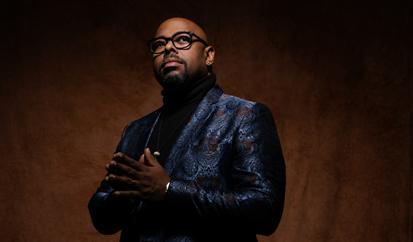

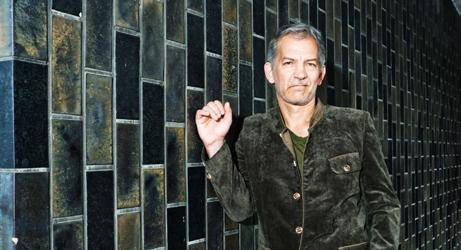
PRELUDE 6:30 PM
Interview hosted by Robert John Hughes
SATURDAY, OCTOBER 18, 2025 · 7:30 PM
THE BAKER-BAUM CONCERT HALL
Christian McBride, bass Brad Mehldau, piano
Works to be announced from stage
THIS PERFORMANCE HAS NO INTERMISSION
Support for our jazz programs is provided by:
Dorothea Laub
La Jolla Music Society’s 2025–26 Season is supported by The City of San Diego Cultural Affairs, California Arts Council, County of San Diego, Prebys Foundation, Farfy Foundation, The Lodge at Torrey Pines, ProtoStar Foundation, Vail Memorial Fund, Rancho La Puerta, Banc of California, ResMed Foundation, San Diego Theatres Foundation, Bright Events Rentals, Cafe Coyote, Rancho Coyote, GRNFC Hospitality Group, Ace Parking, Brenda Baker and Steve Baum, Raffaella Belanich, Gordon Brodfuehrer, Eleanor and Ric Charlton, Mary Ellen Clark, Bert and Julie Cornelison, Elaine Galinson and Herbert Solomon, Irwin Jacobs, Helen and Keith Kim, Angelina and Fred Kleinbub, Dorothea Laub, Vivian Lim and Joseph Wong, Jaqueline and Jean-Luc Robert, Marge and Neal Schmale, Karen and Kit Sickels, Jeanette Stevens, Haeyoung Kong Tang, Debra Turner, Sue and Peter Wagener, Liqun Wang and Marco Londei, Anna and Edward Yeung, Bebe and Marvin Zigman.
Two of the most respected artists in contemporary jazz join forces in this duo. Hailed “one of modern jazz’s most innovative musicians” by Glide Magazine, Christian McBride says, “Brad is justifiably revered as one of the greatest pianists of all time. I’m very proud to have been friends and cohorts with him for almost 35 years. He was one of the first people I met when I moved to NYC in 1989, and it continues to be an uplifting experience every time we play together.” Named “one of our greatest living pianists” by NPR, Brad Mehldau says, “It is a dream come true to play with Christian in this duo setting. Playing with Christian, especially in this co nfiguration, is both joyful and daunting all at once. His level of sophistication and swing, of emotional power and grace, is unsurpassed- not in the least on what he has achieved on his instrument, but also as one of our strongest voices in the music more generally, at the top of his game. I’m so honored to be on stage with him.” This longtime friendship and musical camaraderie has led to various collaborations through the years including the albums MoodSwing (1994), RoundAgain (2020), and LongGone (2023) with Joshua Redman and Brian Blade; trio tour dates with drummer Marcus Gilmore; and a recent duo performance at the Big Ears Festival that had the crowd utterly captivated.
Christian McBride last performed for La Jolla Music Society in the Jazz Series on October 2, 2019. Brad Mehldau last performed for La Jolla Music Society in the Piano Series on March 11, 2017.
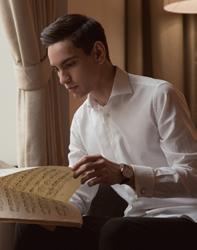
2 PM
Musical Prelude by students from the Colburn School
SUNDAY, OCTOBER 26, 2025 · 3 PM
THE BAKER-BAUM CONCERT HALL
J.S. BACH Ich ruf’ zu dir, Herr Jesu Christ, Chorale Prelude, BWV 639 (arr. Busoni) (1685–1750)
FRANCK Prelude, Fugue and Variations, Opus 18 (arr. Bauer) (1822–1890) Prélude. Andantino
Lento
Fugue. Allegretto ma non troppo Variation. Andantino
TCHAIKOVSKY Dumka, Opus 59 (1840–1893)
Scherzo à la Russe, Opus 1, No. 1, TH124
SCRIABIN Piano Sonata No. 2 in G-sharp Minor, Opus 19 (1872–1915) Andante
Presto
RACHMANINOFF
Support for the Discovery Series is provided by:
Gordon Brodfuehrer
Jeanette Stevens
La Jolla Music Society’s 2025–26 Season is supported by The City of San Diego Cultural Affairs, California Arts Council, County of San Diego, Prebys Foundation, Farfy Foundation, The Lodge at Torrey Pines, ProtoStar Foundation, Vail Memorial Fund, Rancho La Puerta, Banc of California, ResMed Foundation, San Diego
Theatres Foundation, Bright Events Rentals, Cafe Coyote, Rancho Coyote, GRNFC Hospitality Group, Ace Parking, Brenda Baker and Steve Baum, Raffaella Belanich, Gordon Brodfuehrer, Eleanor and Ric Charlton, Mary Ellen Clark, Bert and Julie Cornelison, Elaine Galinson and Herbert Solomon, Irwin Jacobs, Helen and Keith Kim, Angelina and Fred Kleinbub, Dorothea Laub, Vivian Lim and Joseph Wong, Jaqueline and Jean-Luc Robert, Marge and Neal Schmale, Karen and Kit Sickels, Jeanette Stevens, Haeyoung Kong Tang, Debra Turner, Sue and Peter Wagener, Liqun Wang and Marco Londei, Anna and Edward Yeung, Bebe and Marvin Zigman.
Selections from Preludes Opus 23 (1873–1943) No. 1 in F-sharp Minor No. 3 in D Minor No. 5 in G Minor
RACHMANINOFF Selections from Preludes Opus 32 No. 5 in G Major No. 8 in A Minor No. 10 in B Minor No. 12 in G-sharp Minor
PROKOFIEV
Piano Sonata No. 2 in D Minor, Opus 14 (1891–1953)
Allegro ma non troppo
Scherzo. Allegro marcato
Andante
Vivace
Dmitry Shishkin, piano
This performance marks Dmitry Shishkin’s La Jolla Music Society debut.
Program notes by Eric Bromberger
Ich ruf’
Born March 31, 1685, Eisenach, Germany
Died July 28, 1750, Leipzig
Composed: 1713–1716
Approximate Duration: 3 minutes
As a devout Lutheran, Bach took very seriously Martin Luther’s call for a music (and a language) available to all members of the congregation. In the effort to reach the common man and make religion more immediate and meaningful, the music of the Lutheran service was built not on the Latin of the Roman Catholic Church—chanted by the priest—but on the simple and sturdy hymn-tunes of Germany (some of them by Martin Luther himself), which could be sung by all the members of a congregation. Bach was drawn to these old German chorale melodies throughout his career: he wrote cantatas based on chorale tunes, he included chorales in his passions, he composed about thirty new chorale tunes of his own, and he also made about 400 reharmonizations of existing chorale tunes, usually for solo organ.
Ich ruf’ zu dir, Herr Jesu Christ was originally from Bach’s Orgelbüchlein, a collection of short works for organ that he composed in Weimar between 1713 and 1716. Some listeners may be familiar with Ich ruf’ zu dir in Leopold Stokowski’s sumptuous arrangement for symphony orchestra, but this haunting, subdued music also exists in arrangements for piano by Wilhelm Kempff and Andre Watts. It is heard at this recital in a transcription by the German-Italian pianist Ferruccio Busoni (1866–1924), who left seven volumes of Bach transcriptions. Some listeners will recognize this music from its use in the 1972 Russian science fiction film Solaris
Born December 10, 1822, Liège, Belgium
Died November 8, 1890, Paris
Composed: 1860–1862
Approximate Duration: 12 minutes
César Franck originally composed his Prelude, Fugue, and Variation during the years 1860–62 as one of a set of six pieces for organ that he dedicated to his pupil, Camille Saint-Saëns. Franck himself made arrangements of this music for two pianos and for harmonium, but it did not become widely known until English pianist Harold Bauer arranged it for solo piano early in the twentieth century. This lovely music represents Franck at his finest. The opening Prelude, simultaneously elegant and wistful, flows smoothly along its 9/8 meter and is made all the more expressive by Franck’s subtle chromatic shading. This opening subject gives way to a more vigorous secondary material, and eventually the Prelude drives to a full-throated conclusion. A
brief Lento precedes the Fugue, nicely anticipating the fugue subject as it alternates firm chords and wispy arpeggios. The Fugue, marked Allegretto ma non troppo, begins quietly but eventually grows to a powerful climax. In its aftermath, the final section seems at first almost lost: it opens with a wandering, improvisatory quality, as if this strand of steady sixteenths is looking for a home. Eventually it finds one: Franck brings back the opening section, and this final section is in effect a recapitulation of Prelude, now interwoven with the steady strand of sixteenths as counterpoint. This wonderful music eventually arrives at a very quiet—and poised—concluding chord. Bauer’s arrangement deserves special mention. Because Franck conceived this music for organ, he could make use of the organist’s two hands and two feet to produce very wide chords and a very rich sound. With only two hands, a solo pianist cannot hope to match that range and sonority, but Bauer’s arrangement—which requires some unusually wide chording for the performer—is a very effective transfer of this music for the piano.
Born May 7, 1840, Votkinsk, Russia
Died November 6, 1893, St. Petersburg
Composed: 1886; 1887
Approximate Duration: 16 minutes
Tchaikovsky wrote one of the most famous of all piano concertos, but his works for solo piano are almost unknown, and this recital presents two of these pieces. Tchaikovsky composed his Dumka in February–March 1886, while living in the village of Maidanovo, about fifty miles northwest of Moscow. It was winter, and the composer looked out over snowy landscapes as he worked. To his patron Madame von Meck he wrote: “the snow is glistening like myriads of diamonds and is thawing slightly, my window gives me a wide view right into the distance. It’s wonderful and spacious, you can breathe properly in these immense horizons.” That shining vista had much to do with the character of the Dumka—he subtitled it “Russian Rustic Scene.”
A dumka is a form of Ukrainian origin, and the term generally refers to music of a melancholy character that nevertheless may contain flashes of energy and exuberance. It was taken up by a number of Eastern European composers during the second half of the nineteenth century, principally Dvořák, who wrote several dances in this form, as well as his Piano Trio in E Minor, usually called the “Dumky.” Though it may be subtitled “Russian Rustic Scene,” the Dumka should not be understood as tone-painting or as music that tells a story. Instead, this eight-minute piece is in a very general themeand-variation form, based on the folksong-like melody heard at the very beginning. This melody, gentle and rather restrained on first appearance, forms the basis for the entire piece, and it will undergo a number of transformations. Gradually these ease
ahead, become ever faster, and turn brilliant. So virtuosic does this music become that Tchaikovsky stops and gives the pianist a cadenza right at the center, as if this were a movement from a concerto. The energetic transformations resume, the energy level tapers off, and all seems set for a quiet conclusion. But watch out.
Tchaikovsky published his Opus 1, titled Two Pieces, in March 1867. He had written the second piece, an Impromptu, in 1863–64 while still a student at the St. Petersburg Conservatory, and he composed a companion piece, the Scherzo à la russe, in 1867 just as he became a professor of harmony at the Moscow Conservatory. Tchaikovsky based the Scherzo à la russe on a folk tune that he had noted down in Ukraine in 1865. He marks its opening Allegro moderato, and the music proceeds energetically on that jaunty folk tune, here full of staccato writing. A calmer middle section leads to a return of the opening material, and Tchaikovsky rounds off the piece with an extremely powerful coda marked Presto.
Born January 6, 1872, Moscow
Died April 27, 1915, Moscow
Composed: 1897
Approximate Duration: 11 minutes
Scriabin was a virtuoso pianist, finishing second only to Rachmaninoff when both left the Moscow Conservatory in 1892. Over the following several years, Scriabin made a series of ambitious concert tours through Western Europe, and though he had failed composition at the Conservatory, now he composed prolifically. The music from these early years is quite different from his late music, which is fired by mystic and theosophical ideas. The early piano pieces were heavily influenced by Chopin, as their titles suggest: Scriabin wrote preludes, waltzes, mazurkas, impromptus, and études, just as Chopin had earlier in the century.
The Piano Sonata No. 2 dates from the years immediately following Scriabin’s graduation. He wrote the first movement in 1892, but waited five years to add the second, and final, movement in 1897. Very brief (eleven minutes long), this sonata has become a favorite of pianists—despite its extremely unusual key of G-sharp minor—and of audiences. The significance of the nickname “Sonata-Fantasy” is unclear, for these two movements conform to sonata form.
The Andante opens quietly with the main idea. The importance of triple rhythm in this sonata cannot be overstated: triplets seem to be sounding throughout. The second subject, a flowing idea in B major, leads to a development remarkable for its sudden eruptions: huge waves of sound seem to leap out of the piano’s deep register before the movement comes to its quiet close. Of this movement, Scriabin said: “The Second Sonata reflects the influence of the sea . . . the first movement represents the warm quiet of night on a seashore. The development section is the dark agitation of the deep, deep ocean. The E-major
middle section shows caressing moonlight on water coming after the first darkness of night. The second movement represents the vast expanse of the ocean when it is stormy and agitated.”
The triplet rhythm that had been in the background through much of the Andante bursts to the fore in the Presto, with that rhythm hammering insistently through the opening. The heroic second theme, in E-flat minor, itself moves broadly over flowing triplets. The development is dramatic, though after the opening theme returns Scriabin prepares the surprise of the ending very carefully: the music grows quiet, with the triplets now only murmuring, and it is here that he wrenches the music to its sudden end with two sharp chords.
Born April 1, 1873, Semyonovo, Russia
Died March 28, 1943, Beverly Hills
Composed: 1903; 1910
Approximate Duration: 23 minutes
Over a span of eighteen years, Rachmaninoff wrote 24 piano preludes in all the major and minor keys. His Prelude in C-sharp Minor (1892) quickly became so popular that audiences wanted to hear nothing else, and Rachmaninoff waited eleven years before composing the ten preludes of his Opus 23 in 1903; he then paused for another seven years before completing his cycle of 24 preludes with the final thirteen, published as his Opus 32 in 1910. Rachmaninoff’s preludes are brief and are often carefully unified around a melodic or rhythmic cell; many are in ternary form, with a modified return of the opening material. These preludes can also be extremely difficult to perform, with the music ranging from the brilliant and exuberant to the dark and introspective. Rachmaninoff did not feel that his preludes must be performed as a set, and on his recitals he himself would perform selections of his preludes.
In this recital Mr. Shishkin performs seven preludes drawn from Opus 23 and Opus 32. From Opus 23, No. 1 in F-sharp Minor features a steady accompaniment in the left hand, while the wistful main melody is heard quietly in the right; the music builds to a fortissimo climax, then falls away to conclude in the quiet manner of the beginning. Rachmaninoff gives No. 3 in D Minor the marking Tempo di minuetto, though this hardly feels like a classical minuet. Instead, the subdued opening is somber and precise, yet full of rhythmic energy, much of it coiled within the triplet in the left hand; Rachmaninoff calls for a repeat of this opening section before the music plunges into its vigorous second section. No. 5 in G Minor is one of Rachmaninoff’s most famous. Marked Alla marcia, it opens with an ominous vamp that is in fact the first subject; a dark and dreamy central episode leads to a gradual acceleration back to the opening tempo. The ending is particularly effective: the energy of the march dissipates, and the music vanishes in a wisp of sound.
From Opus 32, No. 5 in G Major is all delicacy—here a limpid melody floats above rippling accompaniment, grows
capricious, and finally comes to a shimmering close. Though Rachmaninoff is reported to have disliked Debussy’s music, there are moments here that evoke the music of that composer. The brief No. 8 in A Minor seems in constant motion throughout and requires quick hand-crossings at moments. It is virtually in perpetual motion, with the march-like main theme emerging from whirling cascades of notes. Longest of the preludes in Opus 32, No. 10 in B Minor is regarded by some as the finest of the set. Rachmaninoff said that this music was inspired by Arnold Böcklin’s darkly evocative painting The Homecoming. Dramatic and full-throated, this prelude drives to its climax on chords built of pounding triplets. The haunting No. 12 in G-sharp Minor opens very quietly, with the pianist’s right hand laying out a steady sequence of rippling, dark arpeggios, and beneath these the left hand has the spare and halting main idea. The rippling sound of the beginning continues virtually throughout; Rachmaninoff builds the middle section into music of intensity and force, then allows it to fade away, and the prelude vanishes, almost like smoke.
Born April 23, 1891, Sontsovka, Russian Empire Died March 5, 1953, Moscow
Composed: 1912
Approximate Duration: 19 minutes
The young Prokofiev took delight in his reputation as an enfant terrible, exulting when his music sent audiences—their hands over their ears—toward the exits in droves. The second decade of this century saw the composition of his brutal ballet Scythian Suite, the Second Piano Concerto (which an early critic said made the audience’s hair stand on end), and the aptlytitled Sarcasms for solo piano. From these same years came the Second Piano Sonata, written in 1912 when the composer was 21. When Prokofiev played this sonata in New York City, a critic wrote: “The fingers are of steel, the wrists are of steel, the biceps and triceps are of steel.” Modern ears, however, find the Second Piano Sonata much friendlier. Despite a sometimes percussive style, this sonata—especially in the Andante—features some of Prokofiev’s loveliest writing for the piano.
The sonata is in four movements, but it began life as a one-movement sonatina, which Prokofiev adapted as the first movement of the sonata. This Allegro ma non troppo is full of contrasts: its powerful beginning gives way to a floating, flowing second subject, and Prokofiev contrasts these two ideas throughout. The brief Scherzo is a driving perpetualmotion in its outer sections, a dance in the center. The Andante is especially appealing: over a rocking rhythm, the main idea sings gently, rises to a climax, and falls back to a quiet close. The concluding Vivace sounds very typical of early Prokofiev, with its percussive manner, energy, and bright colors. In an unexpected touch, Prokofiev brings back the lyric second theme of the first movement before the vigorous close, full of massed and powerful chords.

PRELUDE 6:30 PM
Hosted by Meghan Hynson
FRIDAY, NOVEMBER 7, 2025 · 7:30 PM
BALBOA THEATRE
La Jolla Music Society’s 2025–26 Season is supported by The City of San Diego Cultural Affairs, California Arts Council, County of San Diego, Prebys Foundation, Farfy Foundation, The Lodge at Torrey Pines, ProtoStar Foundation, Vail Memorial Fund, Rancho La Puerta, Banc of California, ResMed Foundation, San Diego Theatres Foundation, Bright Events Rentals, Cafe Coyote, Rancho Coyote, GRNFC Hospitality Group, Ace Parking, Brenda Baker and Steve Baum, Raffaella Belanich, Gordon Brodfuehrer, Eleanor and Ric Charlton, Mary Ellen Clark, Bert and Julie Cornelison, Elaine Galinson and Herbert Solomon, Irwin Jacobs, Helen and Keith Kim, Angelina and Fred Kleinbub, Dorothea Laub, Vivian Lim and Joseph Wong, Jaqueline and Jean-Luc Robert, Marge and Neal Schmale, Karen and Kit Sickels, Jeanette Stevens, Haeyoung Kong Tang, Debra Turner, Sue and Peter Wagener, Liqun Wang and Marco Londei, Anna and Edward Yeung, Bebe and Marvin Zigman.
Mariza appears by arrangement with IMG Artists, LLC, 7 West 54thStreet, New York, NY 10019. 212-994-3500
Mariza, Vocals
Luís Guerreiro, Portuguese Guitar
Carlos (Phelipe) Ferreira, Acoustic Guitar
Adriano Alves (Dinga), Bass Guitar
João Freitas, Percussion
João Frade, Accordeon
Artur David, FOH Engineer
Mário Capucho, Monitor Engineer
Rui Daniel, Light Designer
Ricardo Dias, Tour Manager
Works to be announced from stage
THIS PERFORMANCE HAS NO INTERMISSION
The world’s foremost fado singer, Mariza is heiress to the state of mind of the Portuguese people. She has risen to world heritage status, made the world her stage, and seduced the most demanding audiences. With over 30 platinum albums and numerous national and international awards, Mariza is one of the most complete and respected artists in the world.
This performance marks Mariza’s La Jolla Music Society debut.

PRELUDE 6
Interview hosted by Molly Puryear
Support for our dance programs is provided by:
Dorothea Laub
Elaine Galinson and Herbert Solomon
La Jolla Music Society’s 2025–26 Season is supported by The City of San Diego Cultural Affairs, California Arts Council, County of San Diego, Prebys Foundation, Farfy Foundation, The Lodge at Torrey Pines, ProtoStar Foundation, Vail Memorial Fund, Rancho La Puerta, Banc of California, ResMed Foundation, San Diego Theatres Foundation, Bright Events Rentals, Cafe Coyote, Rancho Coyote, GRNFC Hospitality Group, Ace Parking, Brenda Baker and Steve Baum, Raffaella Belanich, Gordon Brodfuehrer, Eleanor and Ric Charlton, Mary Ellen Clark, Bert and Julie Cornelison, Elaine Galinson and Herbert Solomon, Irwin Jacobs, Helen and Keith Kim, Angelina and Fred Kleinbub, Dorothea Laub, Vivian Lim and Joseph Wong, Jaqueline and Jean-Luc Robert, Marge and Neal Schmale, Karen and Kit Sickels, Jeanette Stevens, Haeyoung Kong Tang, Debra Turner, Sue and Peter Wagener, Liqun Wang and Marco Londei, Anna and Edward Yeung, Bebe and Marvin Zigman.
Exclusive US Representation for Ballet Preljocaj: OPUS 3 ARTISTS | 212-994-3500
WorkLife Office – Suite 313, 250 West 34th Street, New York, NY 10119 | www.opus3artists.com
SUNDAY, NOVEMBER 9, 2025 · 7 PM
Ballet Preljocaj
Choreographer and Director Angelin Preljocaj
THIS PERFORMANCE HAS NO INTERMISSION AND IS APPROXIMATELY ONE HOUR AND TWENTY MINUTES.
Gravitation is one of the four fundamental forces that govern the universe. It refers to the force which means two masses are attracted to one another. It is invisible, intangible, essential. But it is the force which creates the attraction that we call weight. For years, these issues of weight, space, speed and mass have intuitively run through my choreographic experiments.
My day-to-day work with the dancers leads me to experiment with forms whose basic components revolve around this question, which is both abstract and terribly concrete. Today, according to a principle of alternation between pieces based on pure research and more narrative ballets, I expect this set of problems involving gravity to open up new writing spaces for me.
— Angelin Preljocaj
Ballet Preljocaj last performed for La Jolla Music Society in the Dance Series on May 8, 2009.
Angie Armand, Liam Bourbon Simeonov, Clara Freschel, Mar Gómez Ballester, Paul-David Gonto, Lucas Hessel, Yu-Hua Lin, Beatrice La Fata, Forine Pegat-Toquet, Valen Rivat-Fournier, Leonardo Santini, Verity Jacobsen
Choreography by
Angelin Preljocaj
Music
Maurice Ravel, Johann Sebastian Bach, Iannis Xenakis, Dimitri Chostakovitch, Daft Punk, Philip Glass, 79D
Costume Design
Igor Chapurin
Lighting Design
Eric Soyer
Rehearsal Assistant
Paolo Franco
Choreologist
Dany Lévêque
Technical Direction
Luc Corazza
General Production and Sound Manager
Martin Lecarme
Lighting Manager
Gaspard Juan
Stage Manager
Michel Pellegrino
Wardrobe Manager
Tania Heidelberger
Production
Ballet Preljocaj
Co-Production
Chaillot - Théâtre National de la Danse – Paris
Les Théâtres de la Ville de Luxembourg
Biennale de la Danse de Lyon 2018
Grand Théâtre de Provence
Scène Nationale d’Albi
Theater Freiburg (Germany)
The Ballet Preljocaj, National Choreographic Center subsidized by Ministry of Culture and Communication – DRAC PACA, Provence-Alpes-Côte d’Azur Region, Bouches-du-Rhône Department, Aix-Marseille Provence Metropolis, City of Aix-en-Provence, and supported by Groupe Partouche - Pasino Grand Aix-en-Provence, with support of the Paris French Institute, individuals and companies sponsors, and private partners.
This US tour is supported by Paris French Institute

6:30 PM
Lecture by Michael Gerdes
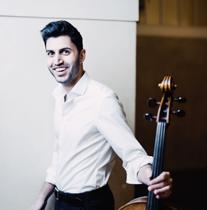

THURSDAY, NOVEMBER 13, 2025 • 7:30 PM
THE BAKER-BAUM CONCERT HALL
BEETHOVEN Trio in B-flat Major for Clarinet, Cello, and Piano, Opus 11 (1770–1827) Allegro con brio
Adagio
Allegretto – Tema: Pria ch’io l’impegno
Andreas Ottensamer, clarinet ; Kian Soltani, cello; Alessio Bax, piano
SCHUBERT Sonata in A Minor for Cello and Piano, D.821 “Arpeggione” (1797–1828)
Allegro moderato
Adagio
Support for this program is provided in part by:
and Richard Goetz
La Jolla Music Society’s 2025–26 Season is supported by The City of San Diego Cultural Affairs, California Arts Council, County of San Diego, Prebys Foundation, Farfy Foundation, The Lodge at Torrey Pines, ProtoStar Foundation, Vail Memorial Fund, Rancho La Puerta, Banc of California, ResMed Foundation, San Diego Theatres Foundation, Bright Events Rentals, Cafe Coyote, Rancho Coyote, GRNFC Hospitality Group, Ace Parking, Brenda Baker and Steve Baum, Raffaella Belanich, Gordon Brodfuehrer, Eleanor and Ric Charlton, Mary Ellen Clark, Bert and Julie Cornelison, Elaine Galinson and Herbert Solomon, Irwin Jacobs, Helen and Keith Kim, Angelina and Fred Kleinbub, Dorothea Laub, Vivian Lim and Joseph Wong, Jaqueline and Jean-Luc Robert, Marge and Neal Schmale, Karen and Kit Sickels, Jeanette Stevens, Haeyoung Kong Tang, Debra Turner, Sue and Peter Wagener, Liqun Wang and Marco Londei, Anna and Edward Yeung, Bebe and Marvin Zigman.
MENDELSSOHN
Allegretto
Kian Soltani, cello; Alessio Bax, piano
INTERMISSION
Selections from Songs without Words (Lieder ohne Worte) (arr. Ottensamer) (1809–1847)
Lieder ohne Worte, Opus. 102, No. 1
Lieder ohne Worte, Opus 62, No. 6
Lieder ohne Worte, Opus 67, No. 5
Lieder ohne Worte, Opus 30, No. 6
Andreas Ottensamer, clarinet ; Alessio Bax, piano
BRAHMS Trio in A Minor for Clarinet, Cello, and Piano, Opus 114 (1833–1897) Allegro
Adagio
Andantino grazioso
Allegro
Andreas Ottensamer, clarinet ; Kian Soltani, cello; Alessio Bax, piano
This performance marks Andreas Ottensamer’s and Alessio Bax’s La Jolla Music Society debuts. Kian Soltani last performed for La Jolla Music Society in the Discovery Series on January 26, 2020.
Born December 16, 1770, Bonn
Died March 26, 1827, Vienna
Composed: 1798
Approximate Duration: 20 minutes
Beethoven wrote this gentle trio in 1798, during his first years in Vienna. Much of his early chamber music included piano, perhaps to give Beethoven more opportunities to perform in his adopted city. This particular combination of instruments is unusual, and Beethoven wrote it at the request of the Austrian clarinet virtuoso Joseph Beer (almost exactly a century later, Brahms would write a trio using these same three instruments for the German clarinetist Richard Mühlfeld, and that work will conclude this program). Aware that this combination of instruments might mean infrequent performances, Beethoven also prepared a version in which violin replaces the clarinet.
The Allegro con brio opens with a jaunty unison statement four octaves deep. The music seems so innocent and straightforward that it is easy to overlook Beethoven’s harmonic surprises: when the second theme arrives, it is in the unexpected key of D major, which sounds striking after the F-major cadence that preceded it. The Adagio is based on one central idea, heard immediately in the cello and marked con espressione. This songlike melody is quickly picked up by the clarinet and embellished as the movement proceeds. Beethoven must have had a particular fondness for this theme, for he used it—in slightly altered form— in his Septet of 1800 and his Piano Sonata in G Major, Opus 49, No. 2, written in 1795.
The finale, marked Allegretto and titled Tema: Pria ch’io l’impegno, is a set of variations on a theme announced at the beginning by the piano. This sprightly tune was originally a vocal trio in the opera L’amor marinaro (also known as Il Corsaro, or The Corsair) by the Austrian composer Joseph Weigl, and that title translates: “Before I begin work, I must have something to eat.” The opera had something of a vogue in Vienna at the time (it was premiered there on October 15, 1797), and Hummel and Paganini later wrote variations of their own on this same theme. When he asked Beethoven to compose this trio for him, Beer gave Weigl’s theme to Beethoven and asked for a set of variations on it. Only after he had completed the trio did Beethoven learn that the theme was from Weigl’s opera, and he was so upset by this discovery that he planned to write a new finale for the trio and publish his variations separately. He never got around to this, however.
Beethoven’s movement consists of Weigl’s theme, nine variations, and a coda. The first variation is for piano alone, but the second is for clarinet and cello duet, virtually the only time in the entire trio when the piano is silent. Subsequent variations alternate between major and minor keys, and a coda based on Weigl’s theme brings the trio to a quick-paced conclusion.
Born January 31, 1797, Vienna
Died November 19, 1828, Vienna
Composed: 1824
Approximate Duration: 27 minutes
In 1823, the Viennese instrument maker Johann Georg Stauffer invented a new instrument, which he called the “guitarvioloncello” or the “guitarre d’amour.” About the size of a cello, it had six strings and frets and was tuned like a guitar; unlike a guitar, however, it had a curved bridge and was played with a bow. The instrument never caught on. Performers did not take it up and few composers were interested, and the instrument quickly lapsed into obscurity where it would have remained were it not for one piece of music composed for it.
A musician named Vincenz Schuster had learned to play the new instrument, and he asked his friend Franz Schubert to write a piece for him to play on it. In November 1824, Schubert composed a three-movement sonata for Schuster and in the process contributed a new name for the instrument—Schubert referred to it as an “arpeggione,” and that name has stuck to the now nearly-forgotten instrument. The instrument may have been relegated to the history books, but the music Schubert wrote for it is so good that it has refused to join the arpeggione in obscurity. A number of different musicians have wanted this sonata for their own instrument, and it has been transcribed for (and recorded upon) such instruments as cello, viola, violin, double bass, flute, clarinet, and guitar; on this program the “Arpeggione” Sonata is heard in a transcription for cello.
The most striking characteristic of this music is how gentle it is. Though full of Schubert’s characteristic fine shading, the sonata remains serene throughout; the composer appears to have been impressed with an element of tonal restraint built into Stauffer’s instrument. The opening Allegro moderato is constructed on two ideas: a dark and lyric opening melody and a busy, good-natured second subject. The development of these ideas, though extended, stays within the restrained character of these themes. A brief Adagio in E major leads without pause into the rondo-finale, marked Allegretto, which swings along agreeably on its 3/8 meter. There are vigorous episodes along the way—and one episode full of wistful Viennese charm—but the amiable spirit that pervades this sonata is never violated.
Born February 3, 1809, Hamburg Died November 4, 1847, Leipzig
Composed: 1830–1845
Approximate Duration: 11 minutes
Between 1830 and 1845 Mendelssohn composed a number of short pieces for piano that he called Lieder ohne Worte: “Songs without Words.” That title makes clear that the impulse in this music is fundamentally lyric: a singing melody, usually in the right hand, is supported by a relatively straightforward
accompaniment in the left, and many of these pieces are easy enough to suggest that Mendelssohn intended them for the growing number of amateur pianists in the first part of the nineteenth century. But many of them are frankly virtuosic, so difficult that they remain beyond the reach of all but the most talented amateur pianists. All these pieces, though, show Mendelssohn’s virtues—appealing melodies, a nice sense of form, rhythmic vitality, and polished writing for the piano—and they became vastly popular, particularly in England. On one of his visits to London, Mendelssohn played several of the Songs without Words movements for Queen Victoria and Prince Albert, and it is a mark of the penetration of this music into popular culture that in A Study in Scarlet Dr. Watson notes that after hours of scraping aimlessly on his violin, Sherlock Holmes made it all up to his friend by playing some of the Mendelssohn Lieder, which Dr. Watson called one of his particular favorites. Mendelssohn collected and published these pieces in groups of six; six sets appeared during his lifetime and two more posthumously. The form of these brief pieces is generally straightforward: the melody is presented immediately, the center section sees a brief development of this material, and Mendelssohn usually rounds matters off with a restatement of the melody at the close.
Born May 7, 1833, Hamburg
Died April 3, 1897, Vienna
Composed: 1891
Approximate Duration: 25 minutes
In March 1891 Brahms, then almost 58 years old and recently retired as a composer, journeyed to Meiningen in southern Germany. His purpose was pleasure: he wanted to hear the famous ducal orchestra there under its new conductor Fritz Steinbach. Steinbach is remembered even today as one of the most famous of Brahms’ interpreters, but on this trip the composer was much more impressed by another musician. The principal clarinetist of the Meiningen Orchestra was a young man named Richard Mühlfeld, and Brahms was captivated by the rich and mellow sound Mühlfeld could draw from his clarinet and by his musical sensitivity. The aging composer would sit for hours listening to Mühlfeld practice, and the result was inevitable: Brahms came out of his short-lived “retirement” and began to write for the clarinet. That summer, at his favorite retreat, Bad Ischl in the mountains east of Salzburg, he composed two works for Mühlfeld: a trio for clarinet, cello, and piano, and a quintet for clarinet and string quartet (two sonatas for the instrument would follow three summers later). Brahms journeyed back to Meiningen the following November for rehearsals with Mühlfeld and Joseph Joachim’s quartet, and both works received their premieres in Berlin on December 12, 1891.
From that instant the Clarinet Quintet has been acclaimed one of Brahms’ greatest works, but the Clarinet Trio has always languished in the shade of the Quintet’s autumnal
glow—it remains a connoisseur’s choice rather than a popular favorite. The distinct sonority of the Trio rises from its unusual combination of instruments, and Brahms makes full use of the rich sound of the cello as well as the mellow sound of Mühlfeld’s clarinet. So smoothly are those sounds intertwined, in fact, that Brahms’ friend Eusebius Mandyczewski wrote to tell the composer that “It is as though the instruments were in love with each other.”
The splendid first movement, marked simply Allegro, begins with the almost stark sound of the solo cello laying out the movement’s noble opening idea, and this theme deserves particular attention. One of the projects Brahms had planned and then abandoned was a Fifth Symphony, and a number of scholars (Sir Donald Francis Tovey among them) believe that the cello theme that opens the Clarinet Trio was originally conceived as the opening theme of the Fifth Symphony. Listeners tantalized by the thought of what such a symphony might have been like may have some sense of that by imagining this noble opening subject played by an entire cello section. This theme grows more animated as it rides over the piano’s spirited triplets, and the chaste second subject restores calm when it too arrives in the cello. The movement is in a generalized sonata form, though the recapitulation is shortened, and it comes to a particularly effective close: Brahms slows the tempo slightly, and clarinet and cello weave delicate strands of sixteenth-notes that answer and swirl around each other and—suddenly and softly—land on the calm final chord.
The Adagio opens with a subdued melody for clarinet that Brahms marks dolce; at a length of only 54 measures, this movement is remarkable for Brahms’ ability to compress his musical experience into so short a span. The Andantino grazioso, in 3/4 meter, hovers on the edge of becoming a waltz; the clarinet’s melody flows and dances gracefully without ever settling firmly into a waltz-rhythm. The finale, a sonata-rondo marked Allegro, offers some of the rhythmic subtlety of Brahms’ late music, and listeners may have trouble deciding whether this movement is in duple or triple meter. Such uncertainty was clearly Brahms’ intention: his opening metric indication 2/4 (6/8) changes frequently, and there are occasional passages in 9/8. The music surges with vitality, but Brahms keeps it anchored firmly in the dark A-minor tonality of the opening movement, and this little-known work closes in the same somber sobriety with which it began.




FRIDAY, NOVEMBER 14, 2025 · 6 PM
Songs and score performed live by:
Vaea A‘etonu, guitar, vocals
Kai Kalama, drum set & percussion
Ryan Keau Kalama, bass, vocals
Lauren Kosty, percussion
Erica Kika Parra, percussion
Support for this program is provided in part by:
La Jolla Music Society’s 2025–26 Season is supported by The City of San Diego Cultural Affairs, California Arts Council, County of San Diego, Prebys Foundation, Farfy Foundation, The Lodge at Torrey Pines, ProtoStar Foundation, Vail Memorial Fund, Rancho La Puerta, Banc of California, ResMed Foundation, San Diego Theatres Foundation, Bright Events Rentals, Cafe Coyote, Rancho Coyote, GRNFC Hospitality Group, Ace Parking, Brenda Baker and Steve Baum, Raffaella Belanich, Gordon Brodfuehrer, Eleanor and Ric Charlton, Mary Ellen Clark, Bert and Julie Cornelison, Elaine Galinson and Herbert Solomon, Irwin Jacobs, Helen and Keith Kim, Angelina and Fred Kleinbub, Dorothea Laub, Vivian Lim and Joseph Wong, Jaqueline and Jean-Luc Robert, Marge and Neal Schmale, Karen and Kit Sickels, Jeanette Stevens, Haeyoung Kong Tang, Debra Turner, Sue and Peter Wagener, Liqun Wang and Marco Londei, Anna and Edward Yeung, Bebe and Marvin Zigman.
Tour Direction:
Artist Management Partners Worldwide LLC
Tim Fox | Alison Ahart Williams | Georgina Ryder www.amp-worldwide.com
Lester Paredes, woodwind
Anthony Kauka Stanley, percussion
Sioeli Tameifuna, percussion
Nina Sosefina, vocals
This performance of Moana in Concert is proudly brought to life by performers and crew from a wide variety of cultural backgrounds, including Samoan, Hawaiian, Tongan, Venezuelan, Colombian and Mexican descent.
The performance is a presentation of the complete film of Disney’s Moana with live music performed by Polynesian rhythm masters and vocalists. Out of respect for the musicians and your fellow audience members, please remain in the theatre until the conclusion of the end credits.
This performance lasts approximately 2 hours including a 20-minute intermission.
Disney Concerts and AMP Worldwide present Disney’s Moana Live-To-Film Concert North American tour, featuring a full-length screening of the beloved movie accompanied by live performances of a unique on-stage musical ensemble of top Hollywood studio musicians, Polynesian rhythm masters and vocalists, celebrating the music and songs from this award-winning Walt Disney Animation Studios’ classic.
About the Movie:
Three thousand years ago, the greatest sailors in the world voyaged across the vast Pacific, discovering the many islands of Oceania. But then, for a millennium, their voyages stopped—and no one knows why. From Walt Disney Animation Studios comes Moana, a sweeping film about an adventurous teenager who sails out on a daring mission to save her people. During her journey, Moana (Auli‘i Cravalho) meets the mighty demigod Maui (Dwayne Johnson), who guides her in her quest to become a master wayfinder. Together, they sail across the open ocean on an actionpacked voyage, encountering enormous monsters and impossible odds. Along the way, Moana fulfills the ancient quest of her ancestors and discovers the one thing she’s always sought: her own identity. Some flashing lights sequences or patterns may affect photosensitive viewers.
This performance marks Moana: Live-to-Film Concert’s La Jolla Music Society debut.
Company Manager
Jennifer Holsapple
Cultural Consultant
Grant Muāgututi‘a
Tour Logistics Coordinator
Diane Burrell
Black Ink Presents
Audio Equipment
Clair Global
DIRECTORS
John Musker, Ron Clements
CO-DIRECTORS
Chris Williams, Don Hall
Tour Staff
Production Manager
Brianna Ballow
Moana
Maui
Gramma Tala
Chief Tui
Tamatoa
Sina
Audio Engineer Mario Alonso Driver
Todd McClain
Polynesian Percussion Section Backline
Kuinise Leiataua Jr.
& Anthony Kauka Stanley
L.A. Percussion & Backline Rentals
New Republic Merch
Polynesian Backline Shipping
Pride of Polynesia
DISNEY MOANA
PRODUCER
Osnat Shurer
SCREENPLAY
Jared Bush, Jennifer Lee
Auli‘i Cravalho
Dwayne Johnson
Rachel House
Temuera Morrison
Jemaine Clement
Nicole Scherzinger
ORIGINAL SCORE
Mark Mancina
Heihei/Villager #3
Fisherman
Villager #1
Villager #2
Toddler Moana
© Disney
Hotel Arrangements
Road Rebel Global
Bus Transportation
Tri-State Travel
ORIGINAL SONGS
Lin-Manuel Miranda
Opetaia Foa ‘i
Mark Mancina
Alan Tudyk
Oscar Kightley
Troy Polamalu
Puanani Cravalho
Louise Bush
Disney Concerts is the concert production and licensing division of Disney Music Group, the music arm of The Walt Disney Company. Disney Concerts produces concerts and tours, and licenses Disney music and visual content to symphony orchestras, choruses, choirs and presenters on a worldwide basis. Disney Concerts’ licensed concert packages include a variety of formats, such as “live to film” concerts and themed instrumental and vocal compilation concerts that range from instrumental-only symphonic performances to multimedia productions featuring live vocalists and choir. Featuring concerts from the largest movie franchises in the world–from Walt Disney Pictures, Walt Disney Animation Studios, Marvel Studios, Lucasfilm, Pixar and 20th Century Studios–current titles include the Star Wars Film Concert Series, Toy Story, Aladdin, Disney Princess–The Concert, Coco, The Lion King, Up, Tim Burton’s The Nightmare Before Christmas, and The Muppet Christmas Carol

Presentation

PRELUDE 2 PM
Musical Prelude by students from the Colburn School
SUNDAY, NOVEMBER 16, 2025 · 3 PM
THE BAKER-BAUM CONCERT HALL
TÁRREGA Caprice Árabe (1852–1909)
Prelude No. 18 in D Major
ALBÉNIZ Torre Bermeja, Opus 92, No. 12 (1860–1909)
TÁRREGA Recuerdos de la Alhambra
ALBÉNIZ Asturias from Suite Espanola, Opus 47 (trans. Feuillâtre)
LLOBET SOLÉS El Testament d’Amelia (1878–1938)
ALBÉNIZ Capricho Catalan, Opus 165, No. 5 (trans. Feuillâtre)
SCARLATTI Presto from Sonata in D Major, K.492 (1685–1757)
LLOBET SOLÉS Variations on a Theme by Sor (La Folia)
INTERMISSION
BARRIOS Mazurka Appassionata (1885–1944)
Support for the Discovery Series is provided by:
Gordon Brodfuehrer
Jeanette Stevens
La Jolla Music Society’s 2025–26 Season is supported by The City of San Diego Cultural Affairs, California Arts Council, County of San Diego, Prebys Foundation, Farfy Foundation, The Lodge at Torrey Pines, ProtoStar Foundation, Vail Memorial Fund, Rancho La Puerta, Banc of California, ResMed Foundation, San Diego Theatres Foundation, Bright Events Rentals, Cafe Coyote, Rancho Coyote, GRNFC Hospitality Group, Ace Parking, Brenda Baker and Steve Baum, Raffaella Belanich, Gordon Brodfuehrer, Eleanor and Ric Charlton, Mary Ellen Clark, Bert and Julie Cornelison, Elaine Galinson and Herbert Solomon, Irwin Jacobs, Helen and Keith Kim, Angelina and Fred Kleinbub, Dorothea Laub, Vivian Lim and Joseph Wong, Jaqueline and Jean-Luc Robert, Marge and Neal Schmale, Karen and Kit Sickels, Jeanette Stevens, Haeyoung Kong Tang, Debra Turner, Sue and Peter Wagener, Liqun Wang and Marco Londei, Anna and Edward Yeung, Bebe and Marvin Zigman.
LAURO Vals Venezolano No. 3 (1917–1986) Valse Ana Florencia
BROUWER La huida de los amantes por el Valle de los Ecos from El Decameron Negro (b. 1939)
SERGIO ASSAD Caterete from Suite Brasileira No. 4 (b. 1952)
VILLA-LOBOS Selections from Suite Populaire Brésilienne (1887–1959) III. Valse–choro
V. Chorino
I. Mazurka–choro
VILLA-LOBOS Étude No. 12 in A Minor
PIAZZOLLA Invierno porteño (arr. Sergio Assad) (1921–1992)
DYENS Fuoco (1955–2016) Raphaël Feuillâtre, guitar
This performance marks Raphaël Feuillâtre’s La Jolla Music Society debut.
Program notes by Eric Bromberger
Born November 21, 1852, Villareal, Castellon, Spain
Died December 15, 1909, Barcelona
Composed: 1891–1892
Approximate Duration: 2 minutes
Francisco Tárrega was known in his day as “the Sarasate of the guitar,” since he did for the guitar what his countryman Pablo de Sarasate did for the violin: composed for his instrument, toured widely, and helped advance the cause of music for that instrument. Tárrega’s concert tours took him throughout Europe, and he wrote original music for the guitar as well as arranging the music of other composers for that instrument.
The Caprice Árabe reminds us of the Moorish influence on Spanish life. While it does not sound especially “Arab” to modern ears, its graceful and haunting melodies—with just a whiff of exotic harmonies—doubtless sounded daring and strange to audiences a century ago.
Composed: 1891–1892
Approximate Duration: 2 minutes
This piece was composed in 1891–92. Marked Andante, it is only about two minutes long. The opening section is suitably melancholy, but the brief central episode introduces a measure of harmonic pungency.
Born May 29, 1860, Camprodón, Lérida, Spain Died May 18, 1909, Campô-les-Bains, France
Composed: 1888
Approximate Duration: 5 minutes
Isaac Albéniz found himself as a composer when he moved away from writing “conventional” virtuoso pieces and began to make use of Spanish material in his own music. Much of Albéniz’s piano music can easily and idiomatically be performed on the guitar, and all three of the pieces on this recital were originally written for piano.
In 1888 Albéniz composed a set of twelve Piezas caracteríticas. These “character pieces” are a group of dances, each dedicated to one of the composer’s friends or students. The last of them, Torre bermeja (that title translates literally as “Crimson Tower”), is a vigorous piece marked Allegro molto. It is in 3/8 and is sectional in form, with lyric episodes in a variety of keys intermingled within the rush of triplets that drives the music forward. Despite these sharp shifts of mood, the 3/8 meter remains constant throughout.
Composed: 1899
Approximate Duration: 5 minutes
Recuerdos de la Alhambra may well be the best-known piece ever written for guitar. It takes the form of a tremolo study, in which the fourth and fifth fingers of the right hand pick out a rapid tremolo as the thumb and lower fingers play a simple, ostinato-like melody far below. This is shimmering, haunting music, and its delicate textures mask the many difficulties it creates for the performer.
Composed: 1886
Approximate Duration: 5 minutes
Albéniz composed four of the eight movements that make up the Suite Española in 1886, then completed the others over the following several years. Each of the eight movements depicts or was inspired by a particular place in Spain (the final movement, a nocturne titled Cuba, is the one exception). Though Albeniz published these eight movements as a set, individual movements have become famous on their own and are often played separately. Asturias, the fifth piece in the suite, has the feel of a perpetual-motion. It is subtitled Leyenda (“legend”).
Born October 18, 1878, Barcelona
Died February 22, 1938, Barcelona
Composed: 1900
Approximate Duration: 3 minutes
Miguel Llobet Solés (he often used his middle name as his last name) was a Catalonian guitarist and composer. He studied with Tárrega and toured throughout Europe and the United States, and though he composed music of his own, he is best remembered for his many arrangements. El Testament d’Amelia (“Amelia’s Will’) is an old Catalan folksong that tells a sad tale: the princess Amelia, having been poisoned by her stepmother, dictates a will that leaves her husband to her stepmother—she knows that the two of them had been having an affair. Marked Andante espressivo, the song is very sad and very beautiful. Andrés Segovia often played it as an encore.
Composed: 1890
Approximate Duration: 4 minutes
In 1889–90 Albéniz wrote a suite of six pieces for piano that he titled España, Opus 165; each of the pieces was to reflect the music of a particular part of Spain. The fifth piece, in the manner of the music of Catalonia, is based on an absolutely haunting melody that flows along above a syncopated
accompaniment. Albéniz constantly reminds the performer to play dolce and dolcissimo Capricho Catalan has been transcribed for guitar by many performers, and it has become more popular in its version for guitar than the original piano version.
Born October 26, 1685, Naples
Died July 23, 1757, Madrid
Composed: c. 1756
Approximate Duration: 3 minutes
Trained as a keyboard player, Domenico Scarlatti held positions in Naples, Florence, Venice, Rome, and Palermo before making the long trip to Lisbon, where he served as court harpsichordist to the King of Portugal. Scarlatti is remembered today for his 550 keyboard sonatas, most of them written over the final decade of his life. Scarlatti called these pieces esercizi (“exercises”), and while they are not actually in sonata form, they look ahead to that form as it would develop across the remainder of the century.
Set in 3/8, the Sonata in D Major is a bright and energetic Presto: it consists of two halves, both repeated. Full of runs and turns, it makes quick excursions into D minor along the way, and with its quick pace and clean textures it sounds very good in a transcription for guitar.
Variations on a Theme of Sor (La Folia)
Born October 18, 1878, Barcelona
Died February 22, 1878, Barcelona
Composed: 1908
Approximate Duration: 8 minutes
The La Folia tune originated in fifteenth-century Portugal, where it was originally a fast dance in triple time, performed so strenuously that the dancers seemed to have gone mad—the title folia meant “mad” or “empty-headed.” Its solemn chordal progression and stately melody have made it attractive as the basis for variations, and a number of composers—most notably Corelli—have written variations on it. Another of those smitten with this theme was the great Spanish guitarist Fernando Sor (1778–1839), who published a set of variations on it for solo guitar in 1810. Almost exactly a century later, in 1908, Miguel Llobet Solés used Sor’s variations on La Folia as the basis for a set of variations of his own. He begins with a statement of the theme and then includes the first two variations of Sor’s own version. From there, he creates variations of his own, pausing after the sixth to offer a brief interlude, an Intermezzo marked Andante molto espressivo. He then presents four more variations, and these become increasingly difficult: the eighth variation is played entirely in harmonics, the ninth entirely by the left hand.
Born May 5, 1885, San Bautista de las Misiones, Paraguay
Died August 7, 1944, San Salvador, El Salvador
Composed: 1919
Approximate Duration: 6 minutes
One of the greatest of all guitar players, Agustín Barrios (who sometimes took the last name Mangoré) learned to play that instrument in his native Paraguay. In 1910, at the age of 25, he left Paraguay for a one-week tour of Argentina, but that tour turned into such a success that he was gone for the next fourteen years. As a performer, Barrios was said to be a virtuoso on the order of Paganini, and he was one of the first guitarists to make recordings (in 1914). His Mazurka appassionato is one of his most famous pieces—and one of his most difficult. Barrios sets the piece in the triple rhythm of the mazurka and then demands huge stretches from the guitarist, who must also play with the rhythmic freedom the mazurka demands.
Born August 3, 1917, Ciudad Bolivar, Venezuela
Died April 18, 1986, Caracas, Venezuela
Composed: 1838–1840
Approximate Duration: 3 minutes
Antonio Lauro began his musical studies on the violin and piano, but at age 15 he heard a recital of the guitar music by Agustín Barrios and was so moved that he dropped the violin and piano to concentrate on the guitar. From an early age, Lauro was drawn to the folk music of Venezuela, particularly to the waltz-like dances native to the region of Venezuela and Colombia. He published a set “Venezuelan Waltzes,” of which the third has become the best known (it has two nicknames: Vals Criollo or Natalia). This is a quick-paced waltz (Lauro’s marking is Allegro ritmico), and it whips past in 90 seconds. By contrast, Ana Florencia is a gentle lullaby.
Born March 1, 1939, Havana
Composed: 1981
Approximate Duration: 4 minutes
Cuban composer and guitarist Leo Brouwer has found the inspiration for much of his own art in the music and rituals brought to Cuba by African slaves. His El Decameron Negro (“The Black Decameron”) is a set of three pieces inspired by a group of nineteenth-century African stories collected by the German ethnologist Leo Frobenius, who in turn had taken his title from the fifteenth-century Decameron by Boccaccio. Brouwer composed El Decameron Negro in 1981 and dedicated it to guitarist Sharon Isbin. Each of the movements was inspired
by one of Frobenius’ tales, and while these pieces do not literally “tell” stories, some have heard the sound of pounding horses’ hooves in the middle movement, titled “The Flight of the Lovers through the Valley of Echoes.”
Caterete from Suite Brasileira No. 4
Born December 26, 1952, Mocóco, Brazil
Composed: 2015
Approximate Duration: 4 minutes
Sérgio Assad learned to play the guitar as a boy, and he has developed a distinguished career as composer, arranger, and performer. Assad’s own compositions reflect his passion for the music of Brazil in its many forms—not just the folk-music that animated Villa-Lobos but also jazz, Latin music in general, and classical music. Assad has written a series of “Brazilian Suites” for solo guitar, and Caterete is the first movement of his Suite Brasileira No. 4, composed in 2015. In a note in the score, Assad points out that a “catarete” is a dance from rural Brazil, popular with the people of the intermarriage between Brazil’s indigenous and European populations. This is a very pleasing piece, and Assad’s performance marking “Relaxed” is exactly right for it.
Born March 5, 1887, Rio de Janeiro
Died November 17, 1959, Rio de Janeiro
Composed: 1928–1929
Approximate Duration: 11 minutes
In the late 1920s, Brazilian composer Heitor Villa-Lobos turned to writing for the guitar. Over the previous several decades he had composed a number of short pieces for guitar, and now he gathered several of these under the title Suite populaire brésilienne. In these years Villa-Lobos had fallen in love with a particular form of Brazilian folk music, the chôro, a body of dances and serenades performed by groups of street musicians in Rio de Janeiro. While the literal meaning of chôro was “lament,” many of these pieces were animated, syncopated, and complex. In the Suite populaire brésilienne, Villa-Lobos gathered five examples he had composed over the previous decades, and they have become a central part of the guitar literature. On this recital, Mr. Feuillâtre plays three movements from the Suite: the Valse-chôro, a slow waltz with a quicker interlude at its center; the Chôrino (“little choro”), slow but based on syncopated rhythms; and the graceful Mazurka-chôro
Composed: 1928–1929
Approximate Duration: 2 minutes 30 seconds
At the same time that he was assembling the Suite (1928–29), Villa-Lobos composed his Twelve Études for Guitar. These études are just that—“studies”—and they present a guitarist with a variety of technical challenges. The last of the études, No. 12 in
A Minor, has become famous just because it is so difficult. It is a study in glissandi: the guitarist must slide three-string patterns very quickly across the fingerboard. The work is in ternary form, with a pounding central section before the glissandi return and drive the étude to its exciting ending.
Born March 11, 1921, Mar de Plata, Argentina
Died July 4, 1992, Buenos Aires
Composed: 1969
Approximate Duration: 7 minutes
During the 1960s, Astor Piazzolla wrote a set of four pieces, each of them devoted to a particular season in Buenos Aires: Cuatro estaciones porteñas. The meaning of porteña (or porteño) is elusive: it means “port” area, and it specifically has come to refer to the port area of Buenos Aires, where the tango was born. By extension, porteñas has come to mean anyone or anything native to Buenos Aires. Piazzolla sometimes performed the four pieces as a group, and they have been arranged for solo violin and orchestra to form a modern counterpart to Vivaldi’s Four Seasons. This concert offers Invierno porteño, the “winter” movement, in an arrangement for solo guitar by Sergio Assad. It is a tango marked Lento e dramatico
Born October 19, 1955, Tunis, Tunisia
Died October 29, 2016, Paris
Composed:1985
Approximate Duration: 3 minutes
Born in Tunisia, Roland Dyens made his career in Paris, where he taught at the National Conservatory of Music. Dyens played not only classical music but also jazz, pop, tango, Brazilian music, Romani music, and many others. He was famed for his improvising, and there is a wonderful story about this. Once Dyens was improvising at a concert when the watch alarm of an audience member went off, playing “O Susanna.” Dyens tried to play through this interruption, but the alarm continued to play, and finally he gave up and improvised a duet on “O Susanna” with the watch. The audience was delighted.
One of Dyens’ best-known works is his Libra Sonatine of 1986, which records his experience with a heart operation. Dyens described the piece: “Its three movements are an explicit portrayal of that very particular period of my life: first the chaotic India (before the operation), then the Largo (during it) and finally the Fuoco, in which the unrestrained rhythms depict a veritable incarnation of my return to life (and several guitarists often play this last movement as an independent piece).”
Fuoco comes as a riotous rush of sound, whipping forward on constantly changing meters and employing all kinds of sonorities: snapped pizzicatos, playing on the wood of the guitar, and so on. Seething with energy and life, it is a perfect piece to conclude a concert.

PRELUDE 6:30 PM
Lecture by Tiffany Kuo
THURSDAY, NOVEMBER 20, 2025 · 7:30 PM
THE BAKER-BAUM CONCERT HALL
LISZT La lugubre gondola No. 2, S.200/2 (1811–1886)
Bagatelle sans tonalité, S.216a
Csárdás macabre, S.224
Unstern! Sinistre. Disastro, S.208
St. François de Paule marchant sur les flots, S.175
Support for this program is provided by: Anna and Edward Yeung
La Jolla Music Society’s 2025–26 Season is supported by The City of San Diego Cultural Affairs, California Arts Council, County of San Diego, Prebys Foundation, Farfy Foundation, The Lodge at Torrey Pines, ProtoStar Foundation, Vail Memorial Fund, Rancho La Puerta, Banc of California, ResMed Foundation, San Diego Theatres Foundation, Bright Events Rentals, Cafe Coyote, Rancho Coyote, GRNFC Hospitality Group, Ace Parking, Brenda Baker and Steve Baum, Raffaella Belanich, Gordon Brodfuehrer, Eleanor and Ric Charlton, Mary Ellen Clark, Bert and Julie Cornelison, Elaine Galinson and Herbert Solomon, Irwin Jacobs, Helen and Keith Kim, Angelina and Fred Kleinbub, Dorothea Laub, Vivian Lim and Joseph Wong, Jaqueline and Jean-Luc Robert, Marge and Neal Schmale, Karen and Kit Sickels, Jeanette Stevens, Haeyoung Kong Tang, Debra Turner, Sue and Peter Wagener, Liqun Wang and Marco Londei, Anna and Edward Yeung, Bebe and Marvin Zigman.
CHOPIN
Selections from Three Mazurkas, Opus 59 (1810–1849)
No. 1 in A Minor
No. 2 in A-flat Major
No. 3 in F-sharp Minor
INTERMISSION
CHOPIN
Piano Sonata No. 3 in B Minor, Opus 58
Allegro maestoso
Scherzo: Molto vivace
Largo
Finale: Presto non tanto
Yulianna Avdeeva, piano
This performance marks Yulianna Avdeeva’s La Jolla Music Society debut.
Program notes by Eric Bromberger
La lugubre gondola, S.200/2
Bagatelle sans tonalité, S.216a
Csárdás macabre, S.224
Unstern! Sinistre. Disastro, S.208
St. François de Paule marchant sur les flots, S.175/2
Born October 22, 1811, Raiding, Austria
Died July 31, 1886, Bayreuth, Germany
Approximate Duration: 34 minutes
The five brief pieces that open this program come from the final years of Liszt’s long life: all but the last come from the early 1880s. Liszt’s career as a touring virtuoso was now long in the past, and in these final years his efforts to “hurl my javelin into the infinite space of the future” (as he defined his mission as a composer) led him to compose music that might best be called experimental—these pieces bring new conceptions of form, sound, and harmony.
In December 1882, two months before Wagner’s death, Liszt watched funeral gondolas move through Venice on their way to cemeteries. Suddenly he was assailed by a premonition of Wagner’s death and wrote La lugubre gondola, setting it in the 6/8 meter of the barcarolle, the traditional song of the gondoliers (though the title suggests that this music is a depiction of a funeral gondola). Three years later Liszt wrote a second version of this music, recasting it in 4/4 and extending it somewhat. This music also exists in a version for either violin or cello with piano, and it has been pointed out that the composer probably did not care in which form it was performed—he was more interested in this piece as theoretical music than as a work that might exploit the sound of a particular instrument.
Bagatelle sans tonalité was composed in 1885, the year before Liszt’s death, but it was not published until 1956, seventy years after his death—the manuscript was discovered in the Liszt Museum in Weimar. There is evidence that this music was originally planned as Liszt’s Fourth Mephisto Waltz (it bears a superficial resemblance to that sequence), but the composer finally came to see it as a separate work. That title translates as “Bagatelle without Tonality,” yet this is not atonal music: the piece does hover around tonal centers, but it refuses ever to settle into a home tonality. Exotic, playful, and willful, the Bagatelle rushes to an unexpected ending, one that resolves nothing.
Liszt wrote the Csárdás macabre in 1881–2, though it was not published until 1956. A csardas is an old Hungarian dance that begins slowly but concludes with a fast section tinged with a Romani flavor. Here Liszt’s slow introduction gives way to the ominous pound of parallel fifths, a sound that will recur throughout the Csárdás macabre. The animated first theme grows directly out of these fifths, and Liszt returns to that interval several times in the course of this wild dance. The second theme reportedly is based on a Hungarian folk song with the text “The
hut is burning while I make love to a gypsy girl,” and Liszt drives the Csárdás macabre to a virtuoso close worthy of its title.
Unstern. Sinistre. Disastro, composed sometime after 1880, is almost unknown. That strange tri-lingual title does not translate easily, but implies something ominous (Unstern means “illomened” or “ill-fated”). This is striking music, full of unsettled harmonies, rhythmic tension between the two hands, and driving energy that finally leads to a mysterious—and unexpected— close.
In 1861 Liszt moved to Rome, and two years later he entered the Oratory of the Madonna del Rosario at Monte Mario; shortly thereafter he took four minor orders in the church. Not surprisingly, an increasing number of Liszt’s works from these years were on religious themes. In 1863 Liszt composed two piano pieces inspired by events from the life of St. Francis of Assisi, both published under the title “legend”: St. Francis of Assisi: Sermon to the Birds and St. Francis of Paola Walking on the Waves.
The second of these was inspired by the account of St. Francis walking on the waves to cross the Strait of Messina. According to legend, the ferryman refused to take St. Francis in his boat, declaring, “If he is a saint, let him walk on the water.” And so St. Francis did just that, spreading his cape on the waves and—with his staff—holding up part of that cape to function as a sail. Liszt was very fond of this story: he hung a drawing of St. Francis’ crossing by E. J. Von Steinle on the wall of his study in Weimar.
Liszt’s Legend is a brief tone-poem for piano that tells this tale. The quiet beginning, marked Andante maestoso, introduces the saint with a noble theme in octaves. Gradually the music turns brilliant, as swirling runs depict the motion of the waves. This builds to a huge chordal climax (Allegro maestoso ed animato) that thunders out the opening theme, now triumphant. The music suddenly breaks off, and the Lento closing section incorporates a theme from Liszt’s own An den heilgen Franziskus von Paula, a work for male chorus, organ, brass, and timpani. Within this, the opening theme reappears, quietly at first, and then builds to a resounding close.
Born March 1, 1810, Zelazowa Wola, Poland Died October 17, 1849, Paris
Composed: 1845
Approximate Duration: 11 minutes
The mazurka was originally an old country dance from the village of Mazovia near Warsaw (its residents were referred to as Mazurs), and as a boy in Poland Chopin heard and saw it danced. That dance was in triple time, with the accent sometimes (but not always!) on the second or third beat; in its original form the mazurka was danced by groups of couples who would separate and return, and it was sometimes accompanied by a bagpipe. Chopin fell in love with this rough country dance, and
his approximately sixty mazurkas span his career: he wrote the first at 14, the last in the year of his death. What most appealed to Chopin was the raw, wild quality of this music, and in his own mazurkas he transformed that rough dance into the vehicle for some of his most sophisticated music.
Chopin composed the three mazurkas of his Opus 59 during the summer of 1845, which he spent with George Sand at her summer home in Nohant. Already the domestic tensions that would tear apart that household (and his relationship with Sand) were making themselves felt, yet there is no trace of any of this in these three mazurkas. No. 1 in A Minor moves easily along its Moderato tempo, with the spare main theme in the right hand; Chopin moves to A major for the more stately second subject, and this becomes more animated. At the return comes one of those points that dismayed early critics: Chopin brings the opening theme back in the “wrong” key of G-sharp major and only gradually makes his way back to the home key and a quiet close. No. 2 in A-flat Major is somewhat more lively—the marking is Allegretto, though Chopin specifies that he wants the performance to be dolce. The steady 3/4 of the left-hand accompaniment might almost make this seem like a waltz, were it not for the freedom and vitality of the righthand melodies. No. 3 in F-sharp Minor is the most famous and striking of the set. The opening right-hand melody is energized by its constant triplets, and this simple beginning grows more complex as it proceeds: the clear textures of the opening vanish in the F-sharp major central episode, as does the steady lefthand accompaniment, and Chopin creates music of unusual contrapuntal complexity. The opening material returns, and all seems set for a straightforward close when Chopin springs one final surprise: he goes back to F-sharp major and rounds off this mazurka with an extended and quiet coda in this “wrong” key.
Composed: 1844
Approximate Duration: 26 minutes
Chopin wrote the Piano Sonata in B Minor, his last largescale composition for piano, during the summer of 1844, when he was 34. He composed the sonata at Nohant, the summer estate in central France he shared with the novelist George Sand. That summer represented a last moment of stasis in the composer’s life—over the next several years his relationship with Sand would deteriorate, and his health, long ravaged by tuberculosis, would begin to fail irretrievably. Dedicated to Madame la Comtesse Emilie de Perthuis, a friend and pupil, the Sonata in B Minor was published in 1845. Chopin himself never performed it in public.
Chopin’s sonatas have come in for a hard time from some critics, and this criticism intensifies to the degree that they depart from the formal pattern of the classical piano sonata. But it is far better to take these sonatas on their own terms and recognize that Chopin—like Beethoven before him—was willing to adapt classical forms for his own expressive purposes. The Sonata in
B Minor is a big work—its four movements stretch out to nearly half an hour. The opening Allegro maestoso does indeed have a majestic beginning with the first theme plunging downward out of the silence, followed moments later by the gorgeous second subject in D major, marked sostenuto. The movement treats both these ideas but dispenses with a complete recapitulation and closes with a restatement of the second theme. The brief Molto vivace is a scherzo, yet here that form is without the violence it sometimes takes on in Beethoven. This scherzo has a distinctly light touch, with the music flickering and flashing across the keyboard (the right-hand part is particularly demanding). A quiet legato middle section offers a moment of repose before the returning of the opening rush.
Chopin launches the lengthy Largo with sharply-dotted rhythms, over which the main theme—itself dotted and marked cantabile—rises quietly and gracefully. This movement is also in ternary form, with a flowing middle section in E major. The finale—Presto, non tanto—leaps to life with a powerful eight-bar introduction built of octaves before the main theme, correctly marked Agitato, launches this rondo in B minor. Of unsurpassed difficulty, this final movement—one of the greatest in the Chopin sonatas—brings the work to a brilliant close.

PRELUDE 6:30 PM
Interview hosted by Molly Puryear
SATURDAY, DECEMBER 6, 2025 · 7:30 PM
CIVIC THEATRE

Founder & Artistic Director
Moses Pendleton
Associate Director
Cynthia Quinn
Jared Bogart, Heather Conn, Nathaniel Davis, Madeline Dwyer, Derek Elliott Jr.,
Aurelie Garcia, Seah Hagan, Oksana Horban, and Adam Ross
Conceived and Directed by Moses Pendleton
Associate Director
Cynthia Quinn
Support for our dance programs is provided by:
Dorothea Laub
Elaine Galinson and Herbert Solomon
La Jolla Music Society’s 2025–26 Season is supported by The City of San Diego Cultural Affairs, California Arts Council, County of San Diego, Prebys Foundation, Farfy Foundation, The Lodge at Torrey Pines, ProtoStar Foundation, Vail Memorial Fund, Rancho La Puerta, Banc of California, ResMed Foundation, San Diego Theatres Foundation, Bright Events Rentals, Cafe Coyote, Rancho Coyote, GRNFC Hospitality Group, Ace Parking, Brenda Baker and Steve Baum, Raffaella Belanich, Gordon Brodfuehrer, Eleanor and Ric Charlton, Mary Ellen Clark, Bert and Julie Cornelison, Elaine Galinson and Herbert Solomon, Irwin Jacobs, Helen and Keith Kim, Angelina and Fred Kleinbub, Dorothea Laub, Vivian Lim and Joseph Wong, Jaqueline and Jean-Luc Robert, Marge and Neal Schmale, Karen and Kit Sickels, Jeanette Stevens, Haeyoung Kong Tang, Debra Turner, Sue and Peter Wagener, Liqun Wang and Marco Londei, Anna and Edward Yeung, Bebe and Marvin Zigman.
Assisted by Anthony Bocconi, Beau Campbell, Jennifer Chicheportiche, Samantha Chiesa, Heather Conn, Gregory De Armond, Jonathan Eden, Matt Giordano, Seah Hagan, Hannah Klinkman, Sean Langford, Heather Magee, Sarah Nachbauer, Jade Primicias, Rebecca Rasmussen, Colton Wall, Jason Williams
Production Manager & Lighting Supervisor
Woodrow F. Dick III
Production Stage Manager/FOH Engineer
Colin Neukirch
Production Electrician
Alexa Denney
Lead Carpenter/Rigger
Lily Fontes
Lighting Design
Michael Korsch
Music Collage
Moses Pendleton
Music Editing
Andrew Hanson
Video Design
Woodrow F. Dick III
Spider Puppet Design
Michael Curry
Costume Design
Phoebe Katzin
Costume Construction
Phoebe Katzin & Beryl Taylor
Ballet Mistress
Victoria Mazzarelli
Research Consultant
Philip Holland
Communications Manager
Quinn Pendleton
Company Manager
Paula Budetti Burns
This performance marks MOMIX’s La Jolla Music Society debut.
Travel down the rabbit hole MOMIX-style, with Moses Pendleton’s newest creation, ALICE, inspired by Alice’s Adventures in Wonderland
As Alice’s body grows and shrinks and grows again, MOMIX dancers extend themselves by means of props, ropes, and other dancers.
“We don’t intend to retell the whole Alice story,” Pendleton says, “but to use it as a taking-off point for invention. I’m curious to see what will emerge, and I’m getting curiouser and curiouser the more I learn about Lewis Caroll. I share his passion for photography and his proclivity for puns.”
The Alice story is full of imagery and absurd logic—before there was Surrealism, there was Alice. Alice is an invitation to invent, to let the imagination run wild. “Go ask Alice,” sang Grace Slick in “White Rabbit”—she also said, “Feed your head.”
Pendleton continues, “You can see why I think Alice is a natural fit for MOMIX and an opportunity for us to extend our reach. We want to take this show into places we haven’t been before in terms of the fusion of dance, lighting, music, costumes, and projected imagery. Our puns are visual, not verbal. It’s not modern dance, it’s MOMIX—under the spell of Lewis Carroll, who was under the spell of Alice—who was still learning to spell.”
As with every MOMIX production, you never quite know what you are going to get. Hopefully, audiences will be taken on a journey that is both magical, mysterious, fun, eccentric, and much more.
As Alice falls down the rabbit hole and experiences every kind of transformation, we invite you to follow her.
We see Alice as an invitation to invent, to dream, to alter the way we perceive the world, to open it to new possibilities. The stage is our rabbit hole, we welcome you to drop in!
—
Moses Pendleton, Artistic Director
This production of Alice has been funded, in part, by a contribution from Next Move Dance.
“Would you tell me, please, which way I ought to go from here?”
“That depends a good deal on where you want to get to.”
“I don’t much care where—”
“Then it doesn’t matter which way you go.”
A Summer Day
Alice Down the Rabbit Hole
Pool of Tears
A Trip of Rabbits
The Tweedles
The Cheshire Cat
Advice from a Blue Caterpillar
The Lobster Quadrille
Mad Hatters
The Queen of Diamonds
The Queen of Clubs Versus The Queen of Spades
The Mad Queen of Hearts
Cracked Mirrors
— Lewis Carroll
TWO: Through the Looking Glass
There is Another Shore Into the Woods
The Wolf-Spied-Her Looking Through Stained Glass Garden of Molar Bears & Other Creatures
The Mock Turtle Deflated Trial of the Fallen Cards Bed of Roses Go Ask Alice
Des Chapeaux dans les Lapins by Odezenne - Alix Calliet, Jacques Cormary, and Matthia Lucchini, SDRM; Cracked Mirrors and Stopped Clocks, Womb Duvet by Origamibiro - Tom Hill, Andy Tytherleigh, and The Joy of Box, Two Thousand and Eleven Ribbon Music; Faster and Faster by Tony Kinsey, KMP LTD; Fortress of Doors, Fungiferous Flora, Skool Daze, Falling Down the Rabbit Hole by Chris Vrenna & Mark Blasquez, Almo/Pink Lava; Taal Se Taal by Alka Yagnik & Udit Narayan - A.R. Rahman & Anand Bakshi, Tips Industry Music Publishing; The Cheshire Cat by Danny Elfman, Wonderland Music Company; Restless by Sounds from the Ground - Nick Woolfson & Eliot Jones from the Waveform Release Brightwhitelight; The Lobster Quadrille by Franz Ferdinand - Alexander Huntley, Nick McCarthy, Paul Thompson, and Robert Hardy, Universal Polygram Intl.; Mexicali, Jacquadi by Polo and Pan - Paul Armand-Delille & Alexandre Grynszpan, EOS; 1977 by Ana Tijoux, BMG; Don’t Worry, We’ll Be Watching You, Smoke and Mirrors by Gotye - Wouter De Backer, Songs of Kobalt Music.; Prologue/Cherry Ripe by Richard Hartley, He Pro Tunes, Inc.; The Sea by Joey Pecoraro, Rough Trade Songs; Divine Moments of Truth by Shpongle - Simon James Posford & Raja Ram, Twisted Music LTD; Requiem by House Made of Dawn, Arcane Creative Publishing; 2 Songar (Two Songs) II Vogguvis (Lullaby) by Jon Leifs, Iceland Music Information Center; Indifferent Universe, Liminalidad, Espera by Lucrecia Dalt, RVNG Intl.; White Rabbit written by Grace Slick, published by Mole Music (BMI) All rights reserved, (used by permission); Perpetuum Mobile by Simon Jeffes, Daniel Myer, Barbara Thompson, and Dejan Samardzic, Editions Penguin Cafe LTD.
MOMIX, a company of dancer-illusionists founded and directed by Moses Pendleton, has been presenting work of exceptional inventiveness and physical beauty for more than 40 years. From its base in Washington, Connecticut, the company has developed a devoted worldwide following. In addition to stage performances, MOMIX has also worked in film and television, as well as corporate advertising, with national commercials for Hanes and Target, and presentations for Mercedes-Benz, Fiat, and Pirelli. With performances on PBS’s “Dance in America” series, France’s Antenne II, and Italian RAI television, the company’s repertory has been beamed to 55 countries. The Rhombus Media film of Mussorgsky’s Pictures at an Exhibition with MOMIX and the Montreal Symphony was the winner of an International Emmy for Best Performing Arts Special. MOMIX was also featured in IMAGINE, one of the first 3D IMAX films released in IMAX theaters worldwide. MOMIX dancers Cynthia Quinn and Karl Baumann, under Moses Pendleton’s direction, played the role of “Bluey” in the feature film F/X2, and White Widow, co-choreographed by Pendleton and Quinn, was featured in Robert Altman’s movie The Company. With nothing more than light, shadow, fabric, props, and the human body, MOMIX continues to astonish and delight audiences on five continents.

THURSDAY, DECEMBER 11, 2025 · 7:30 PM
THE BAKER-BAUM CONCERT HALL
La Jolla Music Society’s 2025–26 Season is supported by The City of San Diego Cultural Affairs, California Arts Council, County of San Diego, Prebys Foundation, Farfy Foundation, The Lodge at Torrey Pines, ProtoStar Foundation, Vail Memorial Fund, Rancho La Puerta, Banc of California, ResMed Foundation, San Diego Theatres Foundation, Bright Events Rentals, Cafe Coyote, Rancho Coyote, GRNFC Hospitality Group, Ace Parking, Brenda Baker and Steve Baum, Raffaella Belanich, Gordon Brodfuehrer, Eleanor and Ric Charlton, Mary Ellen Clark, Bert and Julie Cornelison, Elaine Galinson and Herbert Solomon, Irwin Jacobs, Helen and Keith Kim, Angelina and Fred Kleinbub, Dorothea Laub, Vivian Lim and Joseph Wong, Jaqueline and Jean-Luc Robert, Marge and Neal Schmale, Karen and Kit Sickels, Jeanette Stevens, Haeyoung Kong Tang, Debra Turner, Sue and Peter Wagener, Liqun Wang and Marco Londei, Anna and Edward Yeung, Bebe and Marvin Zigman.
The official website of Canadian Brass is www.canadianbrass.com
Keep up with Canadian Brass via Instagram, Twitter, Facebook and YouTube.
Canadian Brass recordings are available at www.canadianbrassstore.com
Canadian Brass is represented by Opus 3 Artists www.opus3artists.com
Joe Burgstaller and Mikio Sasaki, trumpets
Jeff Nelsen, horn
Keith Dyrda, trombone
Chuck Daellenbach, tuba
Canadian Brass: Making Spirits Bright for 50 Years and Counting!
Works to be announced from stage. Selections may include:
It’s the Most Wonderful Time of the Year, Go Tell it On the Mountain, Carol of the Bells, and A Charlie Brown Christmas
Program subject to change
THIS PERFORMANCE HAS AN INTERMISSION
This performance marks Canadian Brass’ La Jolla Music Society debut.
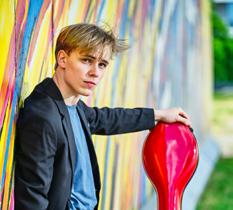

Musical Prelude by students from the Colburn School
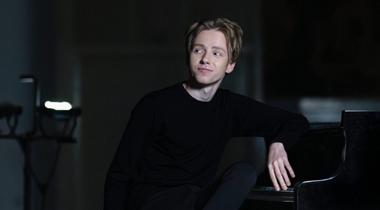
SUNDAY, DECEMBER 14, 2025 · 3 PM THE BAKER-BAUM CONCERT HALL
GERSHWIN Allegro ben ritmato e deciso from Three Preludes for Cello and Piano (1898–1937)
SCHNITTKE Presto from Six Preludes for Piano (1934–1998)
GERSHWIN Andante con moto e poco rubato from Three Preludes for Cello and Piano
SCHNITTKE Andante from Six Preludes for Piano
GERSHWIN Allegro ben ritmato e deciso from Three Preludes for Cello and Piano
Support for the Discovery Series is provided by:
Gordon Brodfuehrer
Jeanette Stevens
La Jolla Music Society’s 2025–26 Season is supported by The City of San Diego Cultural Affairs, California Arts Council, County of San Diego, Prebys Foundation, Farfy Foundation, The Lodge at Torrey Pines, ProtoStar Foundation, Vail Memorial Fund, Rancho La Puerta, Banc of California, ResMed Foundation, San Diego Theatres Foundation, Bright Events Rentals, Cafe Coyote, Rancho Coyote, GRNFC Hospitality Group, Ace Parking, Brenda Baker and Steve Baum, Raffaella Belanich, Gordon Brodfuehrer, Eleanor and Ric Charlton, Mary Ellen Clark, Bert and Julie Cornelison, Elaine Galinson and Herbert Solomon, Irwin Jacobs, Helen and Keith Kim, Angelina and Fred Kleinbub, Dorothea Laub, Vivian Lim and Joseph Wong, Jaqueline and Jean-Luc Robert, Marge and Neal Schmale, Karen and Kit Sickels, Jeanette Stevens, Haeyoung Kong Tang, Debra Turner, Sue and Peter Wagener, Liqun Wang and Marco Londei, Anna and Edward Yeung, Bebe and Marvin Zigman.
SCHNITTKE Maestoso from Six Preludes for Piano
GERSHWIN The Man I Love for Cello and Piano
SCHNITTKE Sonata No. 1 for Cello and Piano
Largo
Presto
Largo
INTERMISSION
RACHMANINOFF Sonata in G Minor for Piano and Cello, Opus 19 (1873–1943) Lento; Allegro moderato Allegro scherzando
Andante
Allegro mosso
Philipp Schupelius, cello; Julius Asal, piano
This performance marks Philipp Schupelius’ and Julius Asal’s La Jolla Music Society debuts.
Program notes by Eric Bromberger
NOTE: This concert opens with a selection of preludes by George Gershwin and Alfred Schnittke. The preludes of the two composers are interwoven on this concert, but the program notes consider them separately.
Born September 26, 1898, Brooklyn
Died July 11, 1937, Hollywood
Composed: 1926
Approximate Duration: 2 minutes; 4 minutes; 2 minutes
Gershwin made a fortune while still a very young man as a composer of songs and Broadway shows, but he longed to be regarded as a “serious” composer. To this end, he studied with such teachers as Rubin Goldmark (who was also teaching Aaron Copland in these years), Wallingford Riegger, and Henry Cowell, and burst to worldwide fame with two works that fused classical music and jazz: Rhapsody in Blue (1924) and the Piano Concerto in F (1925). During these same years Gershwin also was working on a series of short works for solo piano–he completed six of them, which he intended to call Novelettes When it came time to publish them, however, Gershwin selected only three and called them Piano Preludes. Gershwin himself gave the first performance on December 4, 1926, at the Hotel Roosevelt in New York on a duo-recital with Peruvian contralto Marguerite d’Alvarez.
The three preludes are in a fast-slow-fast sequence, and both fast movements have the same marking: Allegro ben ritmato e deciso. Gershwin is reported to have written the first movement (which he referred to as “the Spanish prelude”) in one sitting. The most famous of the preludes is probably the second, in which a bluesy little tune sings languorously over an ostinato bass full of rubato. The preludes are heard on this program in an arrangement for cello and piano.
Born November 24, 1934, Engels, Russian SFSR Died August 3, 1998, Hamburg
Composed: 1953
Approximate Duration: 2 minutes; 2 minutes; 4 minutes
These brief pieces are the work of a very young composer: Alfred Schnittke entered the Moscow Conservatory in the fall of 1953 when he was almost 19, and he wrote the Six Preludes during his first year there. Schnittke would later become a most original composer, ready to explore and experiment, but these brief pieces are the work of a young man looking to the past. He was studying the piano literature in those years, and throughout the Six Preludes we hear echoes of romantic and post-romantic composers: Chopin, Scriabin, Rachmaninoff. Perhaps for that reason Schnittke held these pieces back from publication: the Six Preludes were not published until after his death, and audiences hearing this music without knowing its composer might be
surprised to learn that it is the work of a composer who would go on to compose serial and electronic music (among many other kinds).
We should remember that Schnittke never lost his profound sense of the past, and the Six Preludes–early as they are–usefully remind us of that. The individual preludes do not really require commentary. They are the work of a young man exploring the past and beginning to have some sense of himself as a composer in the process, and listeners may enjoy this music precisely for its remembrance of things past.
Composed: 1924
Approximate Duration: 4 minutes
The well-known The Man I Love was first heard in Lady Be Good, which premiered in December 1924, only ten months after the sensation created by Rhapsody in Blue. It was a star vehicle for the young brother-and-sister team of Fred and Adele Astaire, who sang the premiere, and the song has been taken up by many artists since then.
Composed: 1978
Approximate Duration: 20 minutes
Alfred Schnittke’s Cello Sonata No. 1 dates from 1978, when the composer–then 44–was still living in Moscow. This was a particularly productive period for Schnittke. In 1976 he completed the moving and impressive Piano Quintet and the following year he composed the two works that suddenly established his name in the West: the Concerto Grosso No. 1 and his notorious cadenza for the Beethoven Violin Concerto, which brought him equal measures of fame and excoriation. Schnittke had always been regarded as a part of what little avant-garde the Soviet Union had, and the Cello Sonata No. 1–bleak and dark–flew in the face of every canon of Social Realism; one Western critic has gone so far as to describe this sonata as “a grim portrait of Brezhnev gloom.”
The Cello Sonata No. 1 is in the traditional three movements, but Schnittke reverses expectations with a slowfast-slow sequence of movements. The opening Largo is quite brief. Cello and piano seem to inhabit different worlds here, so dissimilar is their music. The cello sings a brooding and melancholy meditation into which the piano makes the briefest of intrusions. But those intrusions bring whiffs of order into this bleak world, tiny glimpses of consonance and clarity amid the darkness.
By complete contrast, the Presto is a phantasmagoric rush, a perpetual-motion movement that is broken by abrasive, assaultive episodes. The cello opens with seemingly-endless ostinato-figures, and into this rush the piano explodes like a series of pistol shots; along the way the music is driven by almost mindless little tunes full of manic energy. Yet there are
some wonderful sounds in this percussive movement, and it drives to a sonorous climax.
Longer than the first two movements combined, the concluding Largo incorporates some of the spirit (and the music) of both those movements. It opens with the cello’s jagged song of grief, and over the long span of this movement Schnittke spins music of a bleak but somber beauty. At the end, its energy spent, the sonata drifts into silence.
Born April 1, 1873, Semyonova, Russia
Died March 28, 1943, Beverly Hills, California
Composed: 1901
Approximate Duration: 36 minutes
Rachmaninoff wrote very little chamber music: two piano trios, various fragments for string quartet, and some short pieces for strings and keyboard. But for one chamber ensemble he felt a continuing affection–the combination of cello and piano. Among his earliest works were the Romance in F Minor for cello and piano and Two Pieces for Cello and Piano, Opus 2, and to that combination he returned in his final chamber work, the Sonata for Piano and Cello in G Minor
Rachmaninoff wrote this sonata in the summer of 1901, when he was 28. Several years earlier, harsh critical attacks had so damaged his self-confidence that he stopped composing altogether. Under the care of the psychologist Dr. Nikolay Dahl, who treated him with hypnosis, Rachmaninoff regained his confidence and composed his Second Piano Concerto, which had a triumphant premiere. It was in the afterglow of this success that Rachmaninoff wrote the Cello Sonata, and perhaps it should come as no surprise that the sonata shows some of the grand, extroverted manner of the piano concerto. Rachmaninoff and Anatoly Brandoukoff gave the premiere in Moscow on December 2 of that year. The manuscript itself is dated December 12, 1901–apparently Rachmaninoff went back and made some revisions after the first performance.
The Cello Sonata has been criticized for favoring the piano at the expense of the cello. Rachmaninoff was one of the greatest piano virtuosos of all time, and some critics have felt that he naturally wrote best for the instrument he knew best. While the piano does have an unusually prominent role in this sonata, this was by design rather than by default. After hearing a radio performance of the sonata in 1942, Rachmaninoff phoned the cellist to offer congratulations on her playing but also to complain about the balance of the broadcast: the engineers had set the piano well in the background and Rachmaninoff wanted to specify that this was a Sonata for Piano and Cello and not simply a Cello Sonata.
The first movement opens with a Lento introduction that contains suspended fragments of what will become the sonata’s opening theme. When this theme arrives at the Allegro moderato it gives the lie to all who claim that Rachmaninoff wrote badly for the cello–if ever there was a cello theme, this songful surge
of melody is it. The second subject (which critics universally label “Schumannesque”) is for piano alone, and the development is shared equally by the two instruments, though just before the coda the piano is given a virtuosic outburst that almost becomes a small cadenza. The coda to this sonata-form movement is dramatic and declarative.
Marked Allegro scherzando, the brilliant second movement has nothing of the joke about it. Gone are the broad, romantic gestures of the first movement, and in their place comes a muttering, trembling rush of triplets in somber C minor. The movement is in ABA form, which Rachmaninoff varies by inserting a lyric episode into the fast outer sections. The trio section itself is built on a gorgeous lyric theme for the cello, another example of Rachmaninoff’s beautiful writing for the instrument. The ghostly opening section returns to drive the movement to its sudden ending.
The brief Andante, by far the shortest of the movements, opens over an accompaniment of murmuring sixteenth-notes in the piano. First piano and then cello pick up and develop the main theme, a melody so lyric that it should remind listeners of a little-known side of Rachmaninoff: he wrote nearly seventy songs. The Allegro mosso finale contrasts its first theme, built on driving triplets, with a singing second episode. The blazing coda leads to a cadence very much in the manner of the justcompleted Second Piano Concerto.
Julius Asal, piano

Praised by Menahem Pressler for his “uniquely beautiful sound and special sonority,” German pianist Julius Asal is quickly establishing himself as one of the promising performers of his generation. In October 2023, Deutsche Grammophon announced his exclusive signing. In 2024, he was selected as a BBC New Generation Artist. The young pianist, named as Rising Star 2024 by Classic FM, is a regular guest at international festivals (Oxford Piano Festival, Rheingau Musik Festival, Sommets Musicaux de Gstaad, L’Esprit du Piano Bordeaux, Davos Festival, Festspiele Mecklenburg-Vorpommern, Gustav Mahler Festival Toblach etc.) and has performed in prestigious concert halls such as Wigmore Hall London, Musikverein Vienna, Suntory Hall Tokyo, and Laeiszhalle Hamburg. As a toddler, Asal improvised freely and played by ear on the instrument. Years later he received formal lessons and later studied at the Hanns Eisler Academy of Music in Berlin and Kronberg Academy. His first album for Deutsche Grammophon, ScriabinScarlatti, was released in 2024. For World Piano Day 2024, Deutsche Grammophon released Asal’s version of Gustav Holst’s “Mars,” for which he modified and expanded the composer’s piano duo version.
Yulianna Avdeeva, piano

Yulianna Avdeeva is the First Prize winner of the 2010 International Chopin Piano Competition, which launched her to international fame. She made her recital debut at Carnegie Hall in 2023. In 2025, commemorating the 50th anniversary of Shostakovich’s death, Avdeeva performs the 24 Preludes and Fugues, Op. 87, at Gewandhaus, Leipzig; Pierre Boulez Hall, Berlin; Palau de la Música, Barcelona; Warsaw Philharmonic Hall;
and Festival de Lanaudière, Quebec. A new recording of the iconic work is available on PENTATONE. Recent highlights include a tour with the Orchestra of the Eighteenth Century in Kyoto, Osaka, Tokyo, and Fukuoka; her debut with the Chicago Symphony; Baltimore Symphony; Pittsburgh Symphony; Pacific Symphony; Florida Orchestra; NHK Symphony; RAI Italian Radio Orchestra; Minnesota Orchestra; Barcelona Symphony; and Orquesta Sinfónica de Galicia, among others. Voyage, Avdeeva’s album featuring the late works of Chopin, was released in 2024. In 2023 she released the album Resilience, featuring music by Szpilman, Weinberg, Shostakovich, and Prokofiev. #YuliannasMusicalDialogues is an engaging online initiative that provides an open space for her followers and piano aficionados. Avdeeva is an official Steinway Artist.

Founded in December 1984 by Angelin Preljocaj, Ballet Preljocaj is a leading contemporary dance company based in Aix-en-Provence, France. Initially known as Preljocaj Company, it gained National Choreographic Centre status in 1989 and was renamed Ballet Preljocaj in 1996 upon moving into its dedicated home, the Pavillon Noir. Under Preljocaj’s visionary direction, the company has created over 50 choreographic works, integrating classical ballet’s history with resolutely contemporary expression. Since founding his company, now composed of 30 dancers, Angelin Preljocaj has created 61 choreographic works, ranging from solo to larger formations. The Ballet performs about 120 dates per year on tour, in France and abroad. Notable productions include Le Parc (1995), Annonciation (1995), and Blanche Neige (Snow White, 2008). The company and Preljocaj have received numerous accolades, including
the Grand Prix National de la Danse (1992), the Benois de la Danse (1995), a Bessie Award for Annonciation (1997), and the Samuel H. Scripps/ American Dance Festival Award for Lifetime Achievement (2014). Ballet Preljocaj continues to tour internationally, presenting its innovative repertoire worldwide.

Renowned for his lyrical and insightful playing, pianist Alessio Bax rose to fame after winning First Prizes at the 2000 Leeds International Piano Competition and the 1997 Hamamatsu International Piano Competition. Since then, he has performed with over 150 orchestras, including the New York, London, and Royal Philharmonic Orchestras, and the Boston and City of Birmingham Symphony Orchestras, under such eminent conductors as Sir Simon Rattle and Marin Alsop. A dedicated chamber musician, Bax has collaborated with a host of distinguished artists like Joshua Bell, James Ehnes, and Lucille Chung. His acclaimed discography includes Gramophone Editor’s Choices for his recordings of Beethoven’s Hammerklavier and Moonlight Sonatas and the album Baroque Reflections. Other notable releases include Forgotten Dances and a duo album with Lucille Chung. His honors include the Avery Fisher Career Grant (2009), the Andrew Wolf Chamber Music Award (2013), and the Lincoln Center Award for Emerging Artists (2013). Since 2017, Bax has served as the artistic director of the Incontri in Terra di Siena Festival in Tuscany. He is also on the piano faculty at the New England Conservatory.

One of the most popular brass ensembles today, Canadian Brass has truly earned the distinction of the world’s most famous brass group. Their concerts exhibit a full range of musical styles, from Baroque and Dixieland tunes to Bach, Handel, Vivaldi, Joplin, Gershwin, and Ellington to ballet, opera and new compositions and arrangements created especially for them. With a discography of over 135 albums, Canadian Brass has been an important pioneer in bringing brass music to mass audiences everywhere. They have received a total of 24 GRAMMY® and Juno nominations and won the German Echo Award for Goldberg Variations. Canadian Brass plays to packed houses worldwide and was the first brass ensemble from the West to perform in the People’s Republic of China as well as the first brass group to take the main stage at Carnegie Hall. They have made appearances on The Tonight Show, Today, Sesame Street, Evening at Pops with John Williams and the Boston Pops, Beverly Sills’ Music Around the World, and numerous PBS specials, and are frequent guests of many major symphony orchestras.

Hailed as “one of the most exciting classical guitarists of his generation,”
Raphaël Feuillâtre, born in Djibouti in 1996 and raised in the small city of Cholet in western France, is celebrated for his technical mastery and vibrant interpretations spanning from Bach to contemporary works. Feuillâtre’s international breakthrough came with his victory at the 2018 Guitar Foundation of America (GFA) International Concert Artist Competition. This followed his win at the 2017 José Tomás Villa de Petrer
International Guitar Competition, and numerous other prizes across Europe. In 2021, he was recognized by ADAMI as one of their “classical discoveries.” His GFA prize included a solo recital album, and he signed an exclusive partnership with Deutsche Grammophon in 2022. His upcoming debut album with the Yellow Label will feature Baroque arrangements and transcriptions. Feuillâtre’s studies at the Conservatoire National Supérieur de Musique in Paris included working with renowned figures like Roland Dyens and Tristan Manoukian, and he has also studied with Judicaël Perroy.

Born in Mozambique, but raised since she was a girl in one of the most emblematic and traditional neighbourhoods of Lisbon, Mouraria, singer Mariza was influenced from a very early age by the musical culture that inhabits every corner: Fado. Inspired by the big names and the voices of unavoidable reference, she quickly became a local phenomenon and made her name echo across borders. Heiress to the state of mind of the Portuguese people, Mariza rose to world heritage status, made the world her stage and seduced the most demanding audiences Public recognition translated into over 30 platinum albums and the numerous national and international awards. Mariza transcends her own name—she is a latent memory of emotions, she is an ambassador in her own right of a country that continues to admire her. In recent years, Mariza’s internationalization has opened up new musical horizons, transforming her into one of the most complete and respected artists in the world. In 2024, Mariza released a recorded celebration of a career spanning more than two decades.

Christian McBride is a nine-time GRAMMY®winning bassist, composer, and bandleader. He is the artistic director of
the historic Newport Jazz Festival, the New Jersey Performing Arts Center (NJPAC), the TD James Moody Jazz Festival, and the National Jazz Museum in Harlem. McBride is also a respected educator and advocate for youth, and serves as Artistic Director of Jazz House KiDS and the Jazz Aspen Snowmass Summer Sessions. In addition to artistic directing and consistent touring with his ensembles, he hosts NPR’s “Jazz Night in America” and “The Lowdown: Conversations with Christian” on SiriusXM. Whether behind the bass or away from it, McBride is always part of the music. From jazz to R&B, and pop/ rock and hip-hop/neo-soul to classical, he is a luminary with one hand ever reaching for new heights, and the other extended in fellowship—and perhaps the hint of a challenge—inviting us to join him.

One of the most lyrical and intimate voices of contemporary jazz piano, Brad Mehldau has forged a unique path, which embodies the essence of jazz exploration, classical romanticism and pop allure. From critical acclaim as a bandleader to major international exposure in collaborations with Pat Metheny, Renée Fleming, and Joshua Redman, Mehldau continues to garner numerous awards and admiration from both jazz purists and music enthusiasts alike. His forays into melding musical idioms, in both trio and solo settings, has seen brilliant reworkings of songs by contemporary songwriters like The Beatles, Cole Porter, Radiohead, Paul Simon, Gershwin, and Nick Drake, alongside the ever-evolving breadth of his own significant catalogue
of original compositions. With his self-proclaimed affection for popular music and classical training, “Mehldau is the most influential jazz pianist of the last 20 years” (The New York Times).

Known internationally for presenting work of exceptional inventiveness and physical beauty, MOMIX is a company of dancer-illusionists under the direction of Moses Pendleton. In addition to stage performances worldwide, MOMIX has worked in film and television, recently appearing in a national commercial for Hanes underwear and a Target ad that premiered during the airing of the 67th Annual Golden Globe Awards. With performances on PBS’ “Dance in America” series, France’s Antenne II, and Italian RAI television, the company’s repertory has been broadcast to 55 countries. Joining the Montreal Symphony in the Rhombus Media film of Mussorgsky’s Pictures at an Exhibition, winner of an International Emmy for Best Performing Arts Special, the company’s performance was distributed on laserdisc by Decca Records. MOMIX was also featured in IMAGINE, one of the first 3-D IMAX films to be released in IMAX theaters worldwide. MOMIX has been commissioned by corporations such as Fiat and Mercedes Benz, performing at Fiat’s 100th Anniversary Celebration in Torino, Italy, and Mercedes Benz’s International Auto Show in Frankfurt, Germany.

With his distinctive artistry as a clarinetist, conductor, and artistic director, Andreas Ottensamer is considered one of the leading
instrumentalists of our time. Since joining the Berlin Philharmonic Orchestra as principal clarinetist in 2011, he has performed as a soloist with orchestras worldwide, including the Vienna Philharmonic and the London Philharmonic, under conductors like Sir Simon Rattle and Mariss Jansons. He is a regular guest artist at festivals such as the Salzburger Festspiele, the Schleswig Holstein Musik Festival, the Rheingau Musik Festival, and the Festival de Pâques d’Aix en Provence. His notable collaborations in chamber music include performances with Yuja Wang, SeongJin Cho, and Lisa Batiashvili. As the first clarinetist to sign with Deutsche Grammophon, Ottensamer received his second Opus Klassikaward for his 2019 album, Blue Hour. After making his conducting debut in 2021, Ottensamer was awarded the Neeme Järvi Prize. He has since conducted orchestras such as the NHK Symphony Orchestra and the Münchener Kammerorchester. He also serves as artistic director for the Bürgenstock Festival and the Artström Festival, and in 2023, he curated the Classic Revolution Festival in Seoul.

Philipp Schupelius, cello Award-winning cellist Philipp Schupelius, born in Berlin in 2003, has quickly become a prominent soloist and chamber musician on European stages. Schupelius won the German Music Competition in August 2023, as well as the Discovery Award from the International Classical Music Awards (ICMA), the Boris Pergamenschikow Grant (2022), the Fanny Mendelssohn Prize (2022), and the First Great Award of the Manhattan Music Competition (2021). He also earned a Silver Medal at the Eurovision Young Musicians Contest (2022) and is a multiple first-prize winner of Jugend Musiziert. Schupelius’ debut CD, Pau! A Tribute to
Casals, released in 2023, explores the legacy of the great cellist Pablo Casals. Notable performances include Tan Dun’s “Fire and Water” with the Thuringian Philharmonic Orchestra and a memorial concert for Pablo Casals at the Beethoven-Haus Bonn. Schupelius has performed with Daniel Hope and Philip Dukes. He debuted with Tchaikovsky’s Rococo Variations at age 14 and has since performed with orchestras like the Stuttgart Symphony Orchestra, making his Carnegie Hall recital debut in 2022. Schupelius studied with Wolfgang Emanuel Schmidt at Kronberg Academy.

Silver Medalist at the XVI International Tchaikovsky Competition and winner of the 73rd Geneva International Music Competition, Dmitry Shishkin has been acclaimed for both his creative and individual approach to music. He has been described by critics as a “electrifying and flamboyant pianist, of great musical honesty and rigor.” Shishkin’s recent and upcoming highlights include the Shostakovich Piano Concerto at Wiener Musikverein, appearances with the Orchestra de la Suisse Romande, Budapest Festival Orchestra, Prague Radio Symphony, recital tours in S. Korea and Taiwan, as well as at the Bellini Theater in Catania, Wigmore Hall, and at the Verbier Festival. He has also appeared with the Warsaw Philharmonic Orchestra, Belgium National Orchestra, Staatskapelle Weimar, Tokyo Symphony Orchestra, Mariinsky Theatre, Svetlanov State Symphony Orchestra, Russian National Orchestra, Tchaikovsky Symphony Orchestra, Istanbul State Symphony Orchestra, Orchestra del Teatro Massimo Bellini and Cape Town Philharmonic Orchestra, among others. Shishkin is frequently invited to prestigious Festivals, such as Verbier,
La Roque d’Antheron, Dubrovnik Summer Festival, Radio France Montpellier Festival, Bergen Music Festival, “Chopin and his Europe” Festival, and Bergamo Brescia Music Festival.

Dubbed a “remarkable cellist” by The Times, Kian Soltani rose to prominence by winning the International Paulo Cello Competition (2013) and has since received the Leonard Bernstein Award (2017) and the Credit Suisse Young Artist Award (2017). As an exclusive Deutsche Grammophon artist, Soltani’s discography includes his acclaimed debut, Home, and a recording of Dvořák’s Cello Concerto with the Staatskapelle Berlin and conductor Daniel Barenboim. His innovative album, Cello Unlimited, featuring only his cello, earned him the Opus Klassik Innovative Listening Experience Award in 2022. He performs with leading orchestras worldwide, including the Rotterdam Philharmonic Orchestra and Munich Philharmonic Orchestra. As a recitalist, he has appeared in prestigious venues such as Wigmore Hall and the Musikverein Vienna, and frequently collaborates with artists like Renaud Capuçon and Lahav Shani. In 2024–25, Soltani premiered Marcus Nigsch’s cello concerto, written for him, during a tour with the Vienna Symphony. He is a professor of cello at the University of Music and Performing Arts in Vienna. Soltani plays “The London, ex Boccherini” Antonio Stradivari cello, kindly loaned to him by a generous sponsor through the Beares International Violin Society.

GRAMMY® Awardwinning pianist Daniil Trifonov is celebrated for his profound artistry and technique, consistently earning rave reviews and accolades. Trifonov won a GRAMMY®
Award for Best Instrumental Solo Album of 2018 for Transcendental. Other honors include Gramophone’s 2016 Artist of the Year, Musical America’s 2019 Artist of the Year, and being named Chevalier de l’Ordre des Arts et des Lettres by the French government in 2021. He secured major wins in 2010–11 at the Chopin, Rubinstein, and Tchaikovsky Competitions, solidifying his status as a prodigious talent early in his career. Trifonov’s extensive discography with Deutsche Grammophon includes My American Story (2024), Bach: The Art of Life (2021), and the multi-volume Destination Rachmaninov series, a critically acclaimed collaboration with the Philadelphia Orchestra and Yannick Nézet-Séguin. The 2024–25 season featured artistic residencies with both the Chicago Symphony Orchestra and Czech Philharmonic. He performs with leading orchestras and conductors worldwide and in recital, often collaborating with esteemed artists like violinist Leonidas Kavakos. Trifonov also composes, with his Piano Quintet and Piano Concerto having premiered to critical acclaim, further highlighting his multifaceted musical genius. He made his La Jolla Music Society debut in 2012.
A.
Arod
Bernard, T. Blanchard © Cedric Angeles, G. Capuçon courtesy of artist, Ballet Preljocaj © Jean-Claude Carbonne; Pg.4: D. Smith, Grey wolves courtesy of National Geographic, J. Bridges © Dario Acosta, J. Austin © Gillian Riesen, S. Jain © Sachyn Mitali, L. Jussen & A. Jussen © Sanja Marusic, Compagnie Hervé Koubi © Melanie Lhôte, A. Rodriguez & P. Martinez © Anna Webber, J. Ross courtesy of artist, J. Flórez © Gregor Hohenberg, Arod Quartet © Laure Bernard, K. Pe‘a © Brittney Baker, E. Asherie Dance © Nir Arieli, K. Ladzinski courtesy of artist, M. Fujita courtesy of artist; PG. 15: B. Pouliot, S. Porter, P. Wiancko, M. Rostad © Madi Nguyen; PG. 16 17: The Conrad Prebys Performing Arts Center © Bradley Joslin, Mariza © Eduardo Ramos, C. Valdés, N. Bendix-Balgley, S. Jackiw, I. Barnatan, A. Weilerstein, T. Li © Ken Jacques, Y. Lim © Ken Jacques, Sammy Miller & The Congregation © Ken Jacques, Lori Bell Quartet courtesy of The Conrad, Balourdet Quartet courtesy of The Conrad, A. Boles, E. Dusinberre, H. Rhodes, I. Barnatan © Ken Jacques; PG. 19: T. Schultz © Jamie Dixx Photography; PG.20: D. Trifonov © Dario Acosta; PG.23: D. Trifonov © Dario Acosta; Pg. 26: C. McBride © Ebru Yildiz, B. Mehldau courtesy of artist; Pg.24: D. Shishkin courtesy of artist; Mariza © Eduardo Ramos; Pg.32: Ballet Preljocaj © Jean-Claude Carbonne; Pg.34: A. Ottensamer courtesy of artist, K. Soltani © Marco Borggreve, A. Bax © Marco Borggreve; Pg.37: Moana Hero Image © The Walt Disney Company; Pg.39: R. Feuillâtre © Stefan Höderath; Pg.43: Y. Avdeeva courtesy of artist; Pg.46: MOMIX ©Sharen Bradford; Pg.49: Canadian Brass © Lucky Tang; P. Schupelius courtesy of artist, J. Asal courtesy of artist; PG.53—56: J. Asal courtesy of artist, Y. Avdeeva © Maxim Abrossimow, Ballet Preljocaj © Jean-Claude Carbonne, A. Bax © Marco Borggreve, Canadian Brass © Lucky Tang, R. Feuillâtre © Stefan Höderath, Mariza © Pedro Sacadura, C. McBride © Ebru Yildiz, B. Mehldau © Elena Olivo, MOMIX © Sharen Bradford, A. Ottensamer © Dan Carabas, P. Schupelius courtesy of artist, D. Shishkin courtesy of artist, K. Soltani © Marco Borggreve, D. Trifonov © Dario Acosta; Pg.57: K. Brown-Montesano, M. Gerdes, R.J. Hughes, T. Kuo, M. Puryear, M. Hynson courtesy of presenters; BACK COVER: L. Lang © Olaf Heine
Kristi Brown-Montesano, Piano Series lecturer

As a faculty member at the Colburn School Conservatory of Music from 2003–22, Dr. Kristi BrownMontesano served as Chair of Music History and helped shape the degree programs of the institution. Today, she is a Lecturer in Musicology at the UCLA Herb Alpert School of Music. She also collaborates with many of Southern California’s most distinguished musical organizations, including the Los Angeles Philharmonic, Los Angeles Opera, La Jolla Music Society, and the Philharmonic Society of Orange County. For more information, please visit kristibrownmontesano.com.
Michael Gerdes, Revelle Chamber Music and Recital Series lecturer

Michael Gerdes is Director of Orchestras at San Diego State University, where he conducts the San Diego State Symphony Orchestra, Chamber Orchestra, and Opera Orchestra. He earned his Bachelor of Music degree in Music Education and Bachelor of Arts Degree in Philosophy from Concordia College in Moorhead, Minnesota. Selected by the San Diego Union-Tribune as one of three “Faces to Watch in Classical Music” during his first year as Director of Orchestras, Gerdes is focused on creating a thriving orchestral community at San Diego State University.
Robert John Hughes, Jazz Series interviewer

Journalist, broadcaster, musician, author, and record producer Robert John Hughes has interviewed hundreds of musical artists in classical, jazz, pop, rock, R&B, and blues, including Sting, Wynton Marsalis, Bonnie Raitt, Paul Simon, B.B. King, Adele, and Peter Gabriel. As a record producer and member of the GRAMMY® Academy, Hughes has released
five albums of live performances by artists heard on San Diego FM station 102.1 KPRi. Hughes has hosted La Jolla Music Society Preludes since 2018.
lecturer

Professor Tiffany Kuo is a conservatory-trained pianist (Juilliard), and a liberal-arts educated musicologist (Stanford and NYU). Her interdisciplinary research and teaching integrate labor relations, economic inequality, and philanthropic patronage with musicological inquiry to offer culturally relevant perspectives on contemporary music-making. Currently, she holds faculty positions at Mt. San Antonio College, where she has taught since 2011, and the Colburn Conservatory, which she joined in 2019. As an affiliate scholar at the Los Angeles Opera and researcher, Kuo has contributed to scholarly publications, including Critical Historiographies of the Post-War AvantGarde, Dramaturgie Musicale Contemporaine en Europe, and Mitteilungen der Paul Sacher Stiftung. Her work at Mt. San Antonio College includes leading grant-funded initiatives supported by the California Community Colleges Chancellor’s Office and the U.S. Department of Education.

Molly Puryear brings passion for dance and nonprofit administration to her position as Executive Director of Malashock Dance. Puryear has worked with Malashock Dance since 2006, and previously served in the role of Education Director. She strategically aligns artistic and educational efforts to create a dynamic relationship between programs, the communities they serve, and the organization’s valuable funders. Puryear is committed to serving the San Diego community through the development and administration of vibrant dance programs. She believes that dance is an avenue for personal expression that engages people from all walks of life.
Preludes

A performing arts institution located in the heart of Los Angeles, the Colburn School trains students from beginners to those about to embark on professional careers. The academic units of the school provide a complete spectrum of music and dance education united by a single philosophy: that all who desire to study music or dance should have access to top-level instruction. Each year, nearly 2,000 students from around the world come to Colburn to benefit from the renowned faculty, exceptional facilities, and focus on excellence that unites the community. colburnschool.edu

Meghan Hynson, PhD, is an ethnomusicologist, music educator, performer, and sound healing enthusiast. She has spent over a decade living and studying music in Indonesia, particularly the performing arts of Bali and West Java. Before joining the University of San Diego, Dr. Hynson worked at Duquesne University, The University of Pittsburgh, and Monmouth University, where she taught Western art music history, directed gamelan ensembles, and offered globally oriented courses such as Musical Cultures of the World, Global Popular Music, Music and World Religions, and Music, Gender and Sexuality. Throughout her career, she has developed world music curricula and outreach programs for K-12 schools and worked with major museums and international world music festivals. She is an elected member on the council for the Society for Ethnomusicology and reviews submissions for the International Council for Traditional Music and the Smithsonian Folkways Recordings project on Global Learning Pathways.
The remarkable performances presented by La Jolla Music Society are made possible through the generous support of our donor family. Your contributions help close the gap between ticket revenue and the full cost of presenting world-class musicians, dancers, and speakers in San Diego. Your generosity also extends beyond the stage—supporting our educational initiatives and community programs that enrich the lives of students and residents throughout the region. Thank you for making this important work possible.







On the following pages La Jolla Music Society pays tribute to you, your passion makes it possible to share the magic of the performing arts with our community.
We are grateful to all of our contributors who share our enthusiams and passion for the arts. Every donor is a valued partner and they make it possible for one of San Diego’s premier music organizations to present year-round.
It is our honor to recognize the following donors.

FOUNDER
($250,000 and above)
ANGEL
($100,000 - $249,999)
Brenda Baker and Steve Baum
Wendy Brody Estate
The City of San Diego Cultural Affairs
The Conrad Prebys Foundation
Joan* and Irwin Jacobs
Dorothea Laub
Ron Wakefield Estate
BENEFACTOR
($50,000 - $99,999)
Raffaella and John* Belanich
Eleanor and Ric Charlton
Mary Ellen Clark
Farfy Foundation
Jaqueline and Jean-Luc Robert
Stacy and Done Rosenberg
Peter Cooper and Erik Matwijkow
Julie and Bert Cornelison
Elaine Galinson and Herbert Solomon
Susan and Bill Hoehn
Helen and Keith Kim
Karen and Kit Sickels
Debra Turner
Liqun Wang and Marco Londei
Clara Wu Tsai and Joseph Tsai
Anna and Edward Yeung
Angelina and Fredrick Kleinbub
Vivian Lim and Joseph Wong
Marge and Neal Schmale
Haeyoung Kong Tang
Sue and Peter Wagener
Bebe and Marvin Zigman
GUARANTOR ($25,000 - $49,999)
Mary Ann Beyster
Robert Black
Gordon Brodfuehrer
Eric Cohen and Bill Coltellaro*
Silvija* and Brian Devine
Barbara Enberg
Jennifer and Kurt Eve
Marla Bingham and Gary Gallagher
Lehn and Richard Goetz
Jeanne Herberger
John Hesselink
Nancy Linke Patton and Rip Patton
The Lodge at Torrey Pines
Diana and Eli Lombrozo
Viviana and Enrique Lombrozo
Sue and John Major
Arlene and Lou Navias
Jeanne and Rick Norling
Peggy and Peter Preuss
ProtoStar Foundation
Thomas Rasmussen and Clayton Lewis
Sylvia and Steve Ré
Sheryl and Bob Scarano
Mao and Doctor Bob Shillman
Jeanette Stevens
Elizabeth and Joseph* Taft Revocable Trust
Vail Memorial Fund
Lise Wilson and Steven Strauss
SUSTAINER ($15,000 - $24,999)
Judith Bachner and Dr. Eric L. Lasley
Banc of California | Stephen Gamp
Jeffrey Barnouw
Jasna and David Belanich
Jim Beyster
Café Coyote and Rancho Coyote Wines
California Arts Council
Sharon L. Cohen
Ellise and Michael Coit
Cushman Foundation
Jendy Dennis Endowment Fund
Martha and Edward Dennis
Ann Parode Dynes and Robert Dynes*
Pamela Farr and Buford Alexander
Debby and Wain Fishburn
Ingrid and Theodore Friedmann
Hal and Pam Fuson
Teresa and Harry Hixson
Susan and David Kabakoff
Jo Kiernan
Elaine Lipinsky Family Foundation
Kathleen and Ken Lundgren
Jacqueline Mars
Gini and Dave Meyers
Kazeem Omidiji
Leigh P. Ryan
Maureen and Thomas Shiftan
Robert Singer
Dagmar Smek and Arman Oruc
Susan Shirk and Sam Popkin
Stephanie and Nick Stone
Greta and Steve Treadgold
($10,000 - $14,999)
Anonymous
Celeste and Timothy Bailey
Carolyn and Giovanni Bertussi
Robyn Bottomley and Glenn Gutridge
Raymond Chinn
Amy Corton and Carl Eibl
County of San Diego Community Enhancement Fund
Dr. Seuss Foundation
Beverly Fredrick
Joy Frieman
Wendy Frieman
Sarah and Mike Garrison
Buzz and Peg Gitelson
Brenda and Michael Goldbaum
Margaret and Michael Grossman
Ingrid Hibben
Angela and Cory Homnick
Marilee and Peter Kovacs
Elaine and Doug Muchmore
ResMed Foundation
Reesey and David Shaw
Gloria and Joseph Shurman
Susan and Richard Ulevitch
Abby and Ray Weiss
Dolly and Victor Woo
($5,000+)
Anonymous (2)
Judith Adler
Jadwiga Alexiewicz
Arleene Antin and Leonard Ozerkis
Abdul Bitar
Deanna Bittker
Berenice and Jerry Blake
Boys & Girls Foundation
The Blades Foundation
Karen and Jim Brailean
Benjamin Brand and Shara Williams
Lisa and David Casey
Katherine and Dane Chapin
Karen and Don* Cohn
Lori and Aaron Contorer
Debbe Deverill and Jack Powell
The Hon. Diana Lady Dougan
George and Tallie Dennis
Sheryl and Michael Durkin
Mary Emerson
Jill Esterbrooks and James Robbins
Sue and Chris Fan
Diane and Elliot Feuerstein
Barbara and Joseph Giammona
Lisa Braun Glazer and Jeff Glazer
Deborah and Ronald Greenspan
Cheryl Hintzen-Gaines and Ira Gaines
Barbara and Paul Hirshman
Nancy and Stephen Howard
Elisa and Rick Jaime
Theresa Jarvis
Barbara Kjos
Kate Leonard and Richard Forsyth
Sylvia Liwerant
Christine and Charles Lo
Barbara Loonin
Jain Malkin
Miguel Rodolfo Mata Dadillo
M. Margaret McKeown and Peter Cowhey
Andrea Migdal and Mike Tierney
Gail and Edward Miller
Cynthia and George Mitchell Foundation
Robin and Hank Nordhoff
Marina and Rafael Pastor
Linda Platt
Carol Randolph and Robert Caplan
Vivien Ressler
Catherine Rivier
Colette Carson Royston and Ivor Royston
San Diego Theatres
Clifford Schireson and John Venekamp
Todd R. Schultz
Gerald and Susan Slavet
Diane and DJ Smith
Mary Sophos and Williams Pitts
Iris Strauss
Gloria and Rod Stone
Shelby and Bill Strong
Ulf Sundberg and Mariko Sawa
Barbara and Sam Takahashi
Gwynn and Brian Thomas
Mary Ann Tilotta
Ayse Underhill
Mary L. Walshok
Susan Ward and Lawrence Gartner
Armi and Al Williams
Mary and Joseph Witztum
Carol Young
Jeanette and Jack Young
Anonymous
Laura Applegate
Carson Barnett and Tom Dubensky
Emily and Barry Berkov
William Boggs
Carol Carlisle
Aeria Chang and Scott Eisenberg
Marilyn Colby
Melanie Cruz
Craig Dorval
Marilyn and Ernie Dronenburg
Sharon Dunn
Virginia Graham
Terence J. Hart
Linda Howard
Marilyn K. James and Rick Phetteplace
Karen and Warren Kessler
Jeeyoon Kim
Wally Klein
Leonard Korneich
Carol Lam and Mark Burnett
Ann and Gerald* Lipschitz
Mark Machina
Barbara Maggio
Dennis McConnell and Kimberly Kassner
Douglas and Susan McLeod
Elinor Merl and Mark Brodie
Sandra Miner
Muchnic Foundation
Garna Muller
Joyce and Ron Nelson
Virginia Oliver
Robert and Allison Price
Christine Purcell
Cristina and Victor Saldivar
Adriana and Brian Scott
Jean Sullivan and David Nassif
Yvonne E. Vaucher
Lynne and David Weinberg
Jo Weiner
Sheryl and Harvey White
Lisa Widmier
Bart Zeigler
Anonymous (3)
K Andrew Achterkirchen
Albertsons-Safeway Foundation
Axel’s Gift
David Bennett
Nicholas and Samantha Binkley
Molly and Charles Brazell
Diane M. Brockington
Isabel and Stuart Brown
James Carter
Michael and Cathy Casteel
Carol and Jeff Chang
June Chocheles
Anthony Chong and Annette Nguyen
Linda Christensen and Gonzalo Ballon-Landa
Ann Craig
D’Addario Foundation
Carol Danks
Caroline DeMar
Marilou and Marty Dense
Gail Donahue
Karen Dow
Susan Dramm
Renee and James Dunford
Phyllis and Dan Epstein
Nancy Forcier
Stephanie and Roman Friedrich III
Sally and Einar Gall
Girard Foundation | Debe and Mike Alpert
Jeffrey Goldman
Cynthia and Tom Goodman
John Gordon and Jane Burns
The Granada Fund
Marcia Green
Carrie Greenstein
Lee Ann Groshong
Jill Hall
Pamela Hamilton Lester
Nellie High-Iredale
Carol Harter and William Smith
Ted Hoehn and Matt Clermont
Nancy Hong and Dr. Ardem S. Patapoutian
Lulu Hsu
Patricia and Kenneth C. Janda
Zella Kahn-Jetter and Gary Jetter
Dwight Kellogg
John Graul and Cynthia King
Stephanie Kogan and Lawrence Fritz
H. and Susan Koshkarian
Eliza Lee
Greg Lemke
Jenna Liu
Robin Luby
Stacey J. Lucchino
Eileen A. Mason
Ted McKinney
Norman Needel
David and Judie Nielsen
Charles Perrin
Ursula Pfeffer
Dana and Stella Pizzuti
Barbara Rabiner
Jay Rosen
Barry Rosenbush
Arlene and Peter Sacks
Doreen and Myron Schonbrun
Anne and Ronald Simon
David and Phyllis Snyder
Dale and Mark Steele
Lester and Elizabeth Stiel
Lee Talner
Jennifer Tillman
Muffy Walker and John Reed
Joyce Williams
David A. Wood
Natasha Wong and Kevin Chen
Susan and Gavin Zau
Anonymous (3)
Robin Allgren
Paddi and Nicholas Arthur
Balloon Man Dan
Thomas H Bauer
Christopher Beach and Wesley Fata
Stephanie Bergsma and Dwight Hare
Carol and Bruce Boles
Alain J.-J. Cohen
Carolyn and Clifford Colwell
Linda and Rick Dicker
Kim Doren
Stanley Drosch
Jeane Erley
Stephen Feldman
Irene and Eduardo Feller
Melissa Foo
Beverly Fremont
Ferdinand Marcus Gasang
Robert Gleason and Marc Matys
Beth Goodman
Lynn Gorguze and The Hon. Scott Peters
Andrea Harris
Nicole Holland
Gregory A. Jackson
Thesa Jolly
Nancy and Michael Kaehr
Kathleen Kovacs
Carol Lynne Krumhansl
Lewis Leicher and Helen M. Shafir
Jennifer Luce
Peter and Susan Mallory
Linda and Michael Mann
Susan and Craig McClellan
Nita Mehta
Maggie and Paul Meyer
Steve and Ellen Mitgang
Patricia Moises
Francie Murphy and Rick Mitchell
Joani Nelson*
Kyomi O’Connor
Sigrid Pate
John David and Mary Peters
Sharon Rearwin and Thomas Delman
Barbara Rosen and Robert Fahey
Gabriele and Nathan Rosenblatt
Tracy and Tim Sanford-Wachtel
Hannah Schlachet
Denise Selati
Alfred T. Smith
Annemarie and Leland Sprinkle
Anne Turhollow
Karen L. Valentino
Victor A. Van Lint
N. B. Varlotta
Karen M. Walter
Suzanne and Edward Weissman
Carol West
Suhaila White
Olivia and Martin Winkler
Tanya Young and Michael McManus
Barbara and Michel Zelnick
Phyllis and Phil Ziring
($250+)
Sue Andreasen
Yulia Atoyan and Alexander Mirolyan
Sharon Bendall
Colleen Bingham
Joyce and Robert Blumberg
Sandra Boddy and Robert C. Smith
Ron Campnell
Linda and Edgar Canada
Barbara Carey
Michael Casey
Kathy Chambery
Marjorie Coburn
Susan Crutchfield
Hugh Davies
Lesley and Roy Davis
Bernadette Dobbs
Zofia Dziewanowska
Barbara Edgington
Pamel and L. Michael Foley
Kathleen L. Fredman
Catherine Friedman
Yoshiro Fukuoka
Margareta and Bruce Galanter
Renée and Tony Gild
Martha and Bill Gilmer
Diana and Tom Gingell
Patt and Jeff Hall
Mary and Rodger Heglar
Walter Hickey
Vivian and Greg Hook
Ida Houby and Bill Miller
Marilyn Powell Hulquist
David K. Jordan
Sofia and Leon Kassel
Kelley Keatly
Nancy Kennedy
Alexander Kirschner
Paul and Meg Krueger
Carolynn La Pierre
Linda Low-Kalkstein and Allen Kalkstein
Patricia Manners
Brigitte and Richard Obetz
Timothy O’Connor
Adam A. Padua
Grace Y. Park
Irina and Mikhail Prishchepa
Bill Purves and Don Schmidt
Hanna Reisler
Jessica and Eberhard Rohm
Anne Rudolph
James F. Sallis
Nora and Fritz Sargent
Alice and Brad Saunders
Hermeen Scharaga
Marjorie Hansen Shaevitz
Debra J. Shannon
Annie So
Julie Singletary
Esther Sluzky
Kinga S. Soni
Jordan Toellner
Richard Vasquez
Gonul Velicelebi
Jen-Yi Wang
Suzanne Weiner monthly Ostinato donor * in memoriam
This list is current as of September 1, 2025. We regret any errors. Please contact Wadeaa Jubran at WJubran@TheConrad.org or 858.526.3447 to make a correction.
Dorothea Laub
Elaine Galinson and Herbert Solomon
Bebe and Marvin Zigman
Amy Corton and Carl Eibl
Ellise and Michael Coit
Jeanette Stevens
POINTE
Anonymous
Carolyn and Giovanni Bertussi
We are grateful for each member for their passion and support of our dance programs.

Twyla Tharpe Dance Company
In Memory of John Belanich:
Martha and Ed Dennis
Ferdinand Marcus Gasang
Sylvia and Steve Ré
Todd Schultz
In Honor of Ginny Black:
Ferdinand Marcus Gasang
Sylvia and Steve Ré
In Honor of Maureen Clancy:
Lester and Elizabeth Stiel
In Honor of Bill Coltellaro:
Eric Cohen
Ferdinand Gasang
Barbara and Sam Takahashi
In Memory of Silvija Devine:
Ferdinand Marcus Gasang
Sylvia and Steve Ré
In Memory of Alan Gary:
Ferdinand Marcus Gasang
David Rosenthal
Natasha Wong and Kevin Chen
Dolly Woo
Ellen Worthington
In Honor of Ferdie Gasang:
Mao and Doctor Bob Shillman
In Memory of Joan Jacobs:
Ferdinand Marcus Gasang
Sylvia and Steve Ré
Todd Schultz
John Venekamp and Clifford Schireson
In Memory of Harlan Ochs :
Barbara Carey
In Honor of Marilyn Perrin: Charles Perrin
In Honor of Leah Rosenthal: Bart Ziegler
In Honor of Sheryl and Bob Scarano:
Susan and Craig McCLellan
In Honor of Maureen and Thomas Shiftan: Nicole Holland
In Memory of Joanne Snider:
Ferdinand Marcus Gasang
Jud, LeeAnn, and Tyler Groshong
Glenn Mosier
Kevin Pearson and Stephen Murphy
Renee Roth
Reissa Schrager-Cole and Hilary Cole
Kerry Symonds
Dolly and Victor Woo
In Memory of Alan Springer:
Ferdinand Marcus Gasang
Barbara Maggio
In Memory of Fred Stone : Barbara Carey
In Memory of Dr. Steve Thomas : Barbara Carey
La Jolla Music Society stands at a pivotal moment in its history. As we look ahead to our 60th Anniversary Season in 2028—29, we have embarked on an ambitious $60 million endowment campaign to ensure a bold, sustainable, and artistically vibrant future.

This campaign is more than a commitment to stability—it’s about unlocking possibility to:
Present the world’s leading artists with creativity, boldness, and confidence

Deepen and expand our community impact far beyond the stage

Inspire lifelong learning through dynamic education and engagement programs

Advance San Diego’s future by building our national reputation as a beacon of excellence and opportunity
Sustain and enhance our state-of-the-art facilities


Endowment support is a powerful way to ensure that La Jolla Music Society continues to thrive—artistically, educationally, and culturally—for generations to come. Critically, it provides the stability to dream boldly, take creative risks, and welcome more people of all ages into the magic of live performance. With your support, we can ensure that every performance at The Conrad continues to astonish, inspire, and connect—now and far into the future.

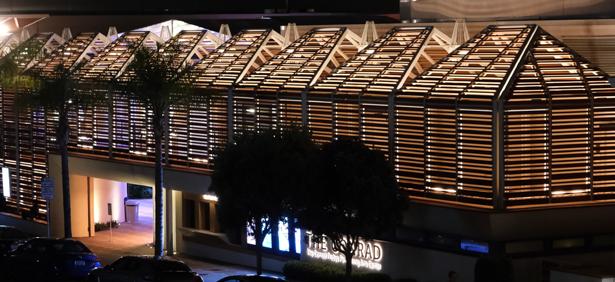

We are deeply grateful to the individuals listed below whose vision and dedication ensure that artistic excellence, educational impact, and cultural vibrancy will continue to thrive.
Judith Bachner and Eric Lasley
Steve Baum
Christopher Beach and Wesley Fata
Raffaella Belanich
Eleanor and Ric Charlton
Julie and Bert Cornelison
Elaine Galinson
Helen and Keith Kim
Vivian Lim and Joseph Wong
Nancy Linke Patton and Rip Patton
Sylvia and Steven Ré
Stacy Kellner Rosenberg and Don Rosenberg
Leigh P. Ryan
Sheryl and Bob Scarano
Marge and Neal Schmale
Todd R. Schultz
Reesey and David Shaw
Jeanette Stevens
Haeyoung Kong Tang
Debbie Turner
Sue and Peter Wagener
Bebe and Marvin Zigman
Anonymous (2)
Brenda Baker and Steve Baum
June L. Bengston*
Donna and Dr. Fred Berger
Joan Jordan Bernstein
Bjorn Bjerede* and Jo Kiernan
James C. and Karen A. Brailean
Gordon Brodfuehrer
Wendy Brody*
Barbara Buskin*
Trevor Callan
Eleanor and Ric Charlton
Geoff and Shem Clow
Anne and Robert Conn
George and Cari Damoose*
Jendy Dennis*
Teresa and Merle Fischlowitz*
Lynda Fox*
Ted and Ingrid Friedmann
Joy and Ed* Frieman
Sally Fuller
Maxwell H. and Muriel S. Gluck*
Trude Hollander*
Joan* and Irwin Jacobs
Eric Lasley
Theodora Lewis*
Vivian Lim and Joseph Wong
Jaime z”l and Sylvia Liwerant
Joani Nelson*
Maria and Dr. Philippe Prokocimer
Bill Purves
Darren and Bree Reinig
Jay W. Richen*
Leigh P. Ryan
Jack and Joan Salb*
Johanna Schiavoni
Pat Shank
Reesey Shaw and David Joseph Shaw, M.D.
Joseph and Gloria Shurman
Karen and Christopher Sickels
Marge and Neal Schmale
Todd R. Schultz
Jeanette Stevens
Elizabeth and Joseph* Taft
Norma Jo Thomas
Yvonne E. Vaucher
Lucy and Ruprecht von Buttlar
Ronald Wakefield*
John B. and Cathy Weil
Karl and Joan Zeisler
Bebe and Marvin Zigman
Josephine Zolin
*in memoriam
It is easy to make a bequest to La Jolla Music Society, and no amount is too small to make a difference.
Here is a sample of language that can be incorporated into your will: “I hereby give ___% of my estate (or specific assets) to La Jolla Music Society, Tax ID 23-7148171, 7600 Fay Avenue, La Jolla, CA 92037, for its artistic programs (or education, general operating, or where needed most).”
Then, please contact Ferdinand Gasang at FGasang@TheConrad.org or 858.526.3426 and let him know you have included LJMS in your estate plans.
The Legacy Society recognizes those generous individuals who have chosen to provide for La Jolla Music Society’s future. Members have remembered La Jolla Music Society in their estate plans in many ways—through their wills, retirement gifts, life income plans, and many other creative planned giving arrangements. We thank them for their vision and hope you will join this very special group of friends.
Brenda Baker and Steve Baum
Joan* and Irwin Jacobs
Dorothea Laub
Raffaella and John* Belanich
Eleanor and Ric Charlton
Mary Ellen Clark
Jaqueline and Jean-Luc Robert
Karen and Kit Sickels
Debra Turner
Liqun Wang and Marco Londei
Julie and Bert Cornelison
Silvija* and Brian Devine
Elaine Galinson and Herbert Solomon
Helen and Keith Kim
Angelina and Fred Kleinbub
Vivian Lim and Joseph Wong
Neal and Marge Schmale
Haeyoung Kong Tang
Sue and Peter Wagener
Anna and Edward Yeung
Barbara Enberg
Arlene and Louis Navias
Pam and Hal Fuson
Peggy and Peter Preuss
Virginia* and Robert Black
Raymond Chinn
John Hesselink
Kathleen and Ken Lundgren
Elaine and Doug Muchmore
Elizabeth and Joseph* Taft
Bebe and Marvin Zigman
Anonymous
Jeff Barnouw
Mary Ann Beyster
Abdul Bitar
James C. and Karen A. Brailean
Benjamin Brand and Shara Williams
Buzz and Peg Gitelson
Lisa Braun-Glazer and Jeff Glazer
Brenda and Michael Goldbaum
Margaret Stevens Grossman and Michael Grossman
Theresa Jarvis
Christine and Charles Lo
Barbara Loonin
Don and Stacy Rosenberg
Leigh P. Ryan
Sheryl and Bob Scarano
Gloria and Joseph Shurman
Susan and Gerald Slavet
Diane and DJ Smith
Jeanette Stevens
Gloria and Rodney Stone
Susan and Richard Ulevitch
Dolly and Victor Woo
*in memoriam
We are honored to have this extraordinary group of friends who have made multi-year commitments to La Jolla Music Society, ensuring that the artistic quality and vision we bring to the community continues to grow.



























Monique Mead
Violinist and Artistic Director of Broadway Week
Adam Kantor
Broadway Star of Rent, Fiddler on the Roof, and The Band’s Visit
Stephen Neely
Carnegie Mellon Professor and Celebrated Vocal Coach
Michele de la Reza
Award-Winning Choreographer and Co-Founder of Attack Theatre
Van Kaplan Veteran Theatre Director and Producer

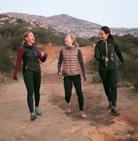
Nick Adams Award-Winning Star of Broadway, Film, and Television
Eden Espinosa
Tony-Nominated Star of Wicked, Rent, and Lempicka





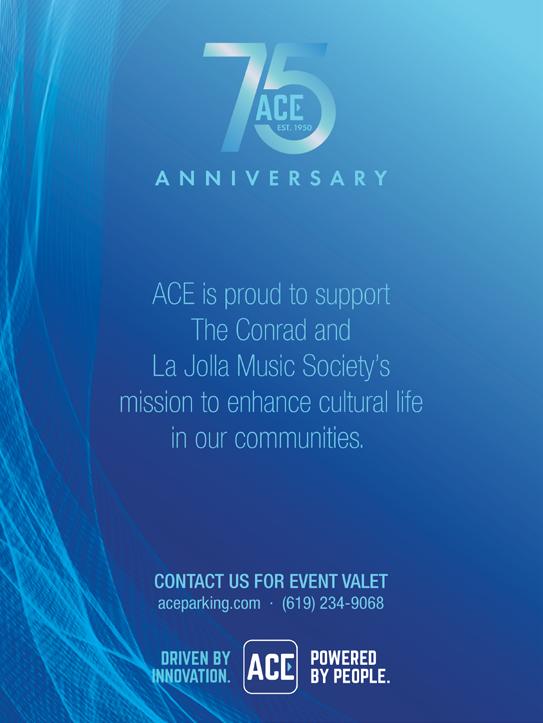

Edward A. Dennis, PhD Chairman
Mary F. Berglund, PhD Treasurer
Peter C. Farrell, PhD, DSc Secretary
Charles G. Cochrane, MD
Michael P. Coppola, MD
Anthony DeMaria, MD
Sir Neil Douglas, MD, DSc, FRCPE
Klaus Schindhelm, BE PhD
Jonathan Schwartz, MD
Kristi Burlingame Executive Director

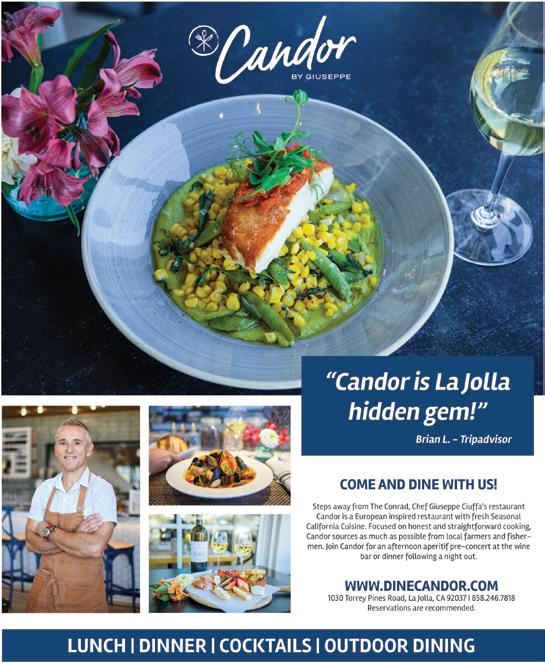
"Candor is La Jolla's hidden gem!"
Brian L. — Tripadvisor

La Jolla Music Society is proud to launch its new Resident Companies @ The Conrad program, welcoming four of San Diego’s leading classical music organizations into an inaugural three-year residency beginning this season. This collaboration celebrates the strength and vibrancy of San Diego’s arts scene—uniting distinctive voices that will not only enliven our stage, but champion and sustain classical music for generations to come.





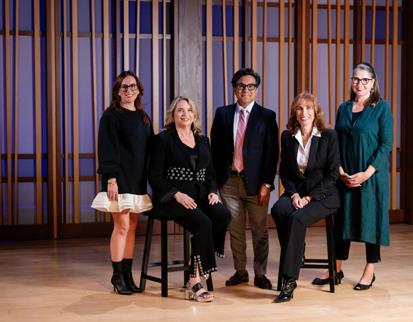
Art of Elan at The JAI
Sunday, October 19 • 7 PM
Art of Elan
When in Rome:
A. Scarlatti, Corelli, and Handel
Saturday, October 25 • 7 PM
Bach Collegium San Diego
Handel’s Messiah
Saturday, December 6 • 7 PM
Bach Collegium San Diego
Charlie Brown Jingles & Jazz
Friday, December 19—Saturday, December 20
Camarada

Celebrate the holidays at The Conrad with Canadian Brass—the internationally-acclaimed ensemble that is fun for the whole family! Enjoy seasonal favorites like “It’s the Most Wonderful Time of the Year,” “Jingle Bell Rock,” and “Christmastime is Here.” From spirited fanfares to soulful melodies, their musical brilliance and joyous stage presence will fill your heart with holiday cheer.


Join us on Thursday, December 11 for an unforgettable concert experience! Get your tickets today. Great seats are available at TheConrad.org.



Arrive early for FREE family-friendly activities at our Holiday Open House!






